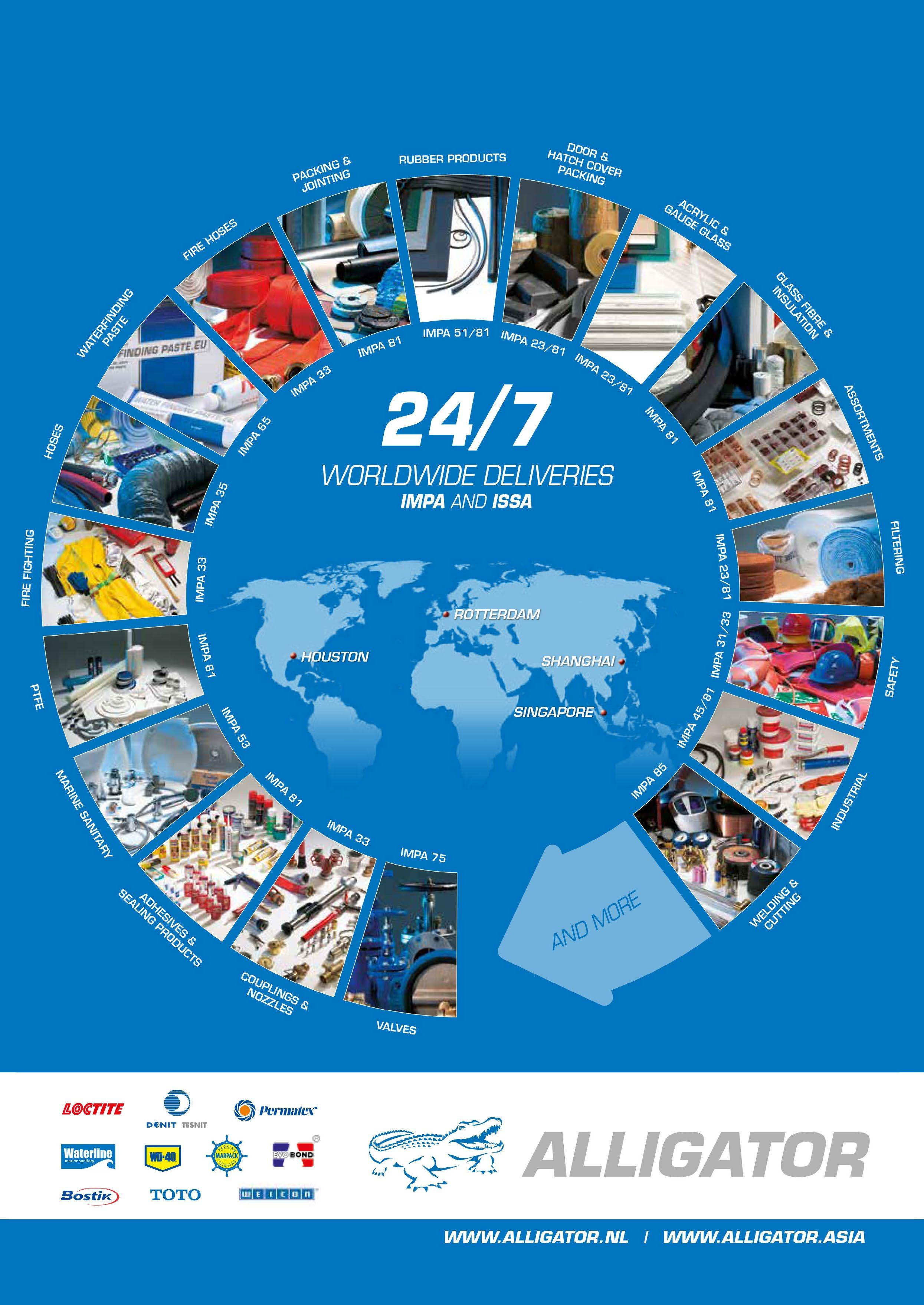


































023 has got off to a very quick start with the ISSA Executive Board reigniting its pre-COVID face-to-face Spring Board Meeting.
At the time of writing I find myself in the exciting port city of Rotterdam with my fellow Executive Vice Presidents.
It is the perfect venue for our Spring Board Meeting as it enables us to discuss many of the important issues facing our ship suppliers members and colleagues around the world against the backdrop of one of the most exciting port complexes in the world, while also interfacing with our OCEAN colleagues who are holding their Spring meeting in Paris at around the same time.
We will also take time out to meet representatives from the Dutch National Association (Nederlandse Vereniging Van Scheepsleveranciers) as well as some of the excellent Dutch members and sub-suppliers.
It will be a busy year ahead with a number of key events happening.
More details will be emerging over the next few weeks and the ISSA Secretariat will keep all members updated through the normal ISSA Bulletin, ISSA website and ISSA Ship Supplier magazine.
We are very excited to be holding a physical ISSA Convention once again this year. Planning is well underway and, again, detailed information will be forwarded to all ISSA Members and other interested parties in the coming days.
We promise a Convention packed with excellent buyer and sub-supplier networking and interface; high level industry debate and interaction; not to mention the all-important social aspect. ISSA is about people and we want to show the world, through our Convention, just how strong and solid the ISSA family is.
You can keep up to date with the latest news on the ISSA website at www.shipsupply.org and send in your comments and views to the ISSA Secretariat either by phone on +44 (0)20 7626 6236; Fax +44 (0)20 7626 6234 or alternatively email secretariat@shipsupply.org
If you would like any further information about the Convention ahead of the formal announcement, then do not hesitate to contact the ISSA Secretariat by email secretariat@shipsupply.org
Happy reading. u
Saeed Al Malik ISSA President
Twelve years ago I was privileged to stage the first panAfrican ship supply conference in Accra, Ghana. Delegates came from throughout the Continent. What was launched that memorable day was a far closer relationship with ISSA and the start of expansion continentwide of the ship supply industry.
A further slow-growing bonus from that day was the eventual formation of the Ghana Shipsuppliers & Services Association (GHASSA) which has now joined ISSA as a fullyfledged member.
Ghana’s two ports of Tema and Takoradi continue to be the focal points for import and export trade within the West African region.
Supporting ISSA members and ship supply in Africa was the key focus of the All-Africa Meeting and its benefits can still be seen today.
Like the rest of the world the Covid Pandemic proved challenging to ship supply. However its impact in West Africa was less than predicted and even at the height of the pandemic supplies continued to move and ships to trade.
Now we see business booming in the West African ports. The same is true elsewhere in Africa.
Africa continues to be an attractive region for cruising. Passengers are mainly from USA and Europe and to an extent

operations were affected. However with stringent hygiene regulations imposed at the time the various visiting ships still managed their programmes. Some port calls though were cancelled.
One of the most significant challenges we faced in Africa in the past year was a serious shortage of containers. This led to eye-watering increases in freight rates such that traffic slowed considerably.
We are optimistic that freight rates are coming back down to more reasonable levels. The box trade generally is restarting. The driver for this is the reality that Africa relies on manufactured goods coming from overseas. The demand for these has not altered.
Export containers with raw materials and agricultural products are also recovering well.
Africa is embracing the new technological advances which are significantly helping the ship supply operation.
All the major ports have invested heavily in new infrastructure more efficiently to perform supply operations.
Vessel movements are now monitored and operated digitally which has speeded up the port operations leading to fewer delays.
I am pleased to be able to report that overall Africa is heading to pre-pandemic levels of business and we are sure this trend will continue. u


First, dear Readers, some historical background!
I would like to quote from the ISSA history of ship supply: “There has always been ship supply. From the time boats became hollow and needed sails, tackle and steering gear somebody had to supply them”.
With this introduction I would like to focus on the Scandinavian area, where shipping and the Maritime industry has been extremely important and active for many hundreds of years.
In Scandinavia it all started during the Viking time when the Norsemen, which the Vikings were called at that time, around the year 700 started to seek prosperity.
The Swedish Vikings were the “Merchants” who sailed through the European river systems to the Black Sea and Istanbul. They reached as far as Baghdad bringing back silk, gold, silver and other treasures from the Middle East.
The Norwegian Vikings were the “Explorers” who sailed to Greenland and reached America and Canada some 700 years before Columbus.
Finally, the Danish Vikings who were the “Hooligans”. They raped and pillaged along the Atlantic coast and went as far as Malta in the Mediterranean. Around the year 800 they went ashore in England and kept control of the British Isles for the next 250 years.
Today, we are much more civilised but the interest in shipping has grown through the years and looks like it will continue for years to come.

We have in Scandinavia a long tradition of seafaring and have many large shipping lines controlling their vessels from here.
Maersk Line - the largest global shipping line - have their main office in Copenhagen. Their ships carry justifiably the 7-pointed star in their logo symbolising the seven seas.
On the ship supply side, we have companies servicing all ports in Scandinavia, no matter how remote they may be.
The largest global ship supply company is located with its head office in Aalborg, Denmark, but with 35 branch offices around the World.
We have colleagues large and small all over Scandinavia who will serve any vessel whatever they need – whenever they need it.
After two difficult years with the global pandemic, times are now looking a little brighter for our industry.
The cruise ships have returned though some of their traditional popular tourist destinations have had to be adjusted due to the war in Ukraine and the politically imposed sanctions.
However, we have seen the situation returning in a positive direction, which we all in the industry are hoping for.
The pandemic, strong competition and heavy administrative burden have forced many of our colleagues to close during the past few years, but our National associations, OCEAN and ISSA are all doing a great job of work in trying to keep the many changes in EU legislation and international rules harmonised so at least we shall have a level playing field.
The Scandinavian ship supply companies are looking forward to a positive 2023. u

It’s probably a bit stale still to mention post-Covid and couple that with post-Brexit maybe an excuse too far. However British ship supply is still feeling the effects of both.
Adding the fact that there is a global shortage of key commodities as stockpiles are severely diminished then you are beginning to paint the picture.
Nevertheless there are positives as to the current U.K. ship supply scenario which has made our members very busy - namely the fact that there are difficulties with importing product into the U.K. from the EU with enhanced lead times and associated increased red tape.

This has meant that our EU colleagues have been less than reluctant to supply U.K. docked vessels thereby increasing opportunities for U.K. ship suppliers.
Let’s not dwell on that but go back to the indigenous problems namely short and inconsistent supply chains, lack of product and increased demand that then manifest commercial problems with fluctuating commodity prices - also adding higher fuel and distribution costs.
Normally these could be passed on to the customer but such is the nature of the long term relationships we are trying to build with customers (and believe me Purchasing Managers never
forget), that our members’ margins are under severe pressure even though volumes and throughput may be up.
Encouragingly it’s great to see shipping business pan-U.K. doing very well whether it be the general cargo, bulk, tanker, offshore and cruise sectors.
Likewise it’s good to see our members doing well but bear in mind that not all of them made it through and further consolidations will also put pressure on membership numbers of BASS/ISSA and the feeling may well be that everyone is working even harder nowadays to make that “buck”. u




With the founding of Lehmann Marine, a subsidiary of Höpen GmbH, a new supplier of innovative maritime products such as the well-known COBRA battery system has entered the maritime market in 2023.
And with the exuberance of youth –the company started life on 1st January this year – it has already received the COBRA battery system under its management.
The Compact Battery Rack - to give COBRA its full title - is freely scalable and bespoke installations can be created to suit all maritime requirements.
For vessels turning to hybrid or full electric installations COBRA can provide an elegant and cost-effective solution.
Originally developed by Becker Marine Systems, COBRA is now under the new Lehmann Marine umbrella.
One of the joint managing directors of Lehmann Marine, Godehard Gauf, explains: “After we pushed ahead with the development of COBRA at Becker Marine Systems over the past six years, the product [now] stands on its own two feet.”
Alexander Lehmann (the other joint Managing Director) commented: “Not only will the proven technology be a part of the new company – all 19 employees working in the COBRA division will be employed at Lehmann Marine - we are also already looking for more staff, especially for production at our location just south of Hamburg.“
And there is no shortage of projects to keep new staff arrivals and the existing team busy.
The unique selling point for COBRA is its emission-free drive system. Both inland waterways and sea-going vessels can enjoy this significant green element. As a result, the system is experiencing an ever-growing demand.
Hamburg Port Authority’s work boat “Chicago”, the hybrid ferry “Liinsand” and a tourist passenger ship are all now enjoying this proven system. Numerous others are queuing up to join.
The statistics are impressive. COBRA offers the advantages of a compact design with free scalability while meeting the highest safety standards thanks to the LFP (Lithium Ferro Phosphate) cell technology used.
The battery system is also attractive

in terms of price, as it is freely scalable from a few kWh to several MWh due to the modular design - a COBRA battery rack can be equipped with up to eight battery modules and offers a capacity of 94 kWh per rack.
In addition to the proven COBRA battery system, Lehmann Marine is already developing other innovative, environmentally friendly energy solutions for the maritime sector.
The company says it is convinced of the increasingly important contribution of emission-free battery systems to green shipping. u
www.lehmann-marine.com


encourages vessel owners and managers to buy into remote inventory monitoring. Some 15,000 vessels support the initiative. Bromley Abbott reports

It’s a simple idea. Get your on-board medical needs monitored and supplied by experts.
However, make sure your preferred supplier has the global reach and resources to guarantee your inventory is in place (and up to date).
Universal Marine Medical Supply International (UNIMED), the leading global provider of medical solutions to the maritime industry, has embraced the current trend for vital equipment and supply operations to be outsourced and remotely monitored.
With its headquarters in New York and worldwide offices across North America, Europe and Asia, UNIMED has built an unassailable lead is this vital –but somewhat esoteric – sector.
UNIMED has wholesale pharmaceutical distribution licences with local partners to service the more than 15,000 vessels that use its services annually across the globe.
Like many maritime sectors, UNIMED encourages its customers to let the firm remotely monitor onboard inventory to ensure stocks are at optimal levels and nothing - medically speaking – is left to chance.
Since failure to maintain the statutorily required medical equipment and consumables stock on board properly is a PSC detention
risk, this innovative system removes one more concern for vessel owners and management.
Within the broad maritime medical sector are sub-sets, which include pharmacy, surgical and general medical supplies. In addition UNIMED is a major global supplier of medical oxygen and other medical gases to the maritime industry.
Ben Montez, Executive VicePresident Americas and Chief Operating Officer elaborated: “With the departure of a prominent oxygen supply vendor due to regulatory pressures, UNIMED is now the main global supplier of on board oxygen.
“Our business model copes with such issues routinely.”
It hasn’t all been plain sailing, though. The global pandemic did present challenges.
Jules Nasso, Executive VicePresident (UK, Europe, Asia) and Chief Commercial Officer explains:
“There was no vaccine available initially. Testing of individuals evolved gradually.”
These days all commercial entities need to be aware of what one might term “the moral dimension”. UNIMED is proud of its track record of compliance and deep understanding of the regulatory framework within which they operate.


In addition UNIMED is a strong supporter of The International Seafarers’ Welfare and Assistance Network (ISWAN).
Although wholesale and distribution are major divisions of the firm, there is a lot more to operations than that.
Ben Montez: “We provide health and safety to all seafarers on board, support of clinical staff and, in the case of cruise lines, full service medical operations. Then there are telemedicine facilities, clinical guidance as well as co-operation and compliance with Flag States.”
He concluded: “Our main aim is to take away the risks and headaches from ship owners and ship managers trying to handle the complexity of maritime medical supply.
“By extending our remote monitoring service, we will continue to welcome more and more vessel owners and managers to our services.”
This sounds like a perfect philosophy to which any owners and manager must surely subscribe. u
www.universalmarinemedical.com


The leading sector expert is advising operators of vessels transporting hybrid and electric vehicles (EVs) on how best to prevent and control fire onboard ship involving lithium-ion batteries.
Readers will recall the suspicion of lithium batteries being transported by air that appeared to combust spontaneously in the early years of the technology.
As part of ongoing initiatives within the industry to improve safety, there is a drive to develop early fire detection systems the better to monitor and protect car decks and lithium-ion batteries installed in vehicles onboard.
Any slight deviation in their properties can provide an early indication that conditions are right for a fire and afford time to take preventative measures to protect or quarantine hybrid and EVs.
Pre-ignition signs of a battery fire include heat and smoke from parts of the vehicle where the battery is usually placed, popping sounds from battery cells, and toxic gas emissions.
While early detection solutions are readily available,
Rafal Kolodziejski, Survitec’s Head of Product Support &

Development - Fire Systems, revealed that these systems are not yet adapted to allow for pre-fire conditions specific to lithium-ion batteries. That is, not only smoke and heat but also gas emissions, including, potentially, sound frequencies related to gas release.
“Monitoring car decks for early-stage fire conditions – typically any fluctuation in temperature or atmospheric condition – is critical to preventing fire propagation. The type and location of sensors are vitally important,” he averred.
Mr Kolodziejski confirmed that Survitec is investing “heavily in the development of new solutions capable of pre-ignition monitoring” and is working with a major ship operator to design a comprehensive fire detection and extinguishing system for the EV cargo deck of a new build PCC (Pure Car Carrier).
Currently in development, the company’s integrated graphical monitoring system can provide real-time status of all the fire-protected zones onboard. The monitoring system will link all the detection systems and sensors onboard to

allow for the remote or local activation of a compartment’s fire suppression system.
Mr Kolodziejski continued: “An EV battery fire is different to any other type of fire in that the battery generates explosive and toxic gases, increasing the size and propagation of the fire.
“The heat is, therefore, more intense, and an extinguished fire can potentially reignite at any time until the battery is completely burnt down.
“This presents a real challenge regarding gas-based fixed fire systems, such as CO2.
“Traditionally, a system pack has sufficient gas for just one discharge in the event of a fire.
“Currently, classification societies propose that double the gas volume is provided, but this may not be enough to control fire or prevent re-ignition,” he concluded.
Water-based solutions provide the best cooling effect, which is crucial in the case of this type of fire. However, the volume of water required to control an EV deck fire could impact ship stability, so a suitable drainage system must also be considered.
Research shows that a water mist system has the highest efficiency for this type of fire. However, because battery modules are installed under the floor in most EVs, the most significant heat will be generated at deck level.
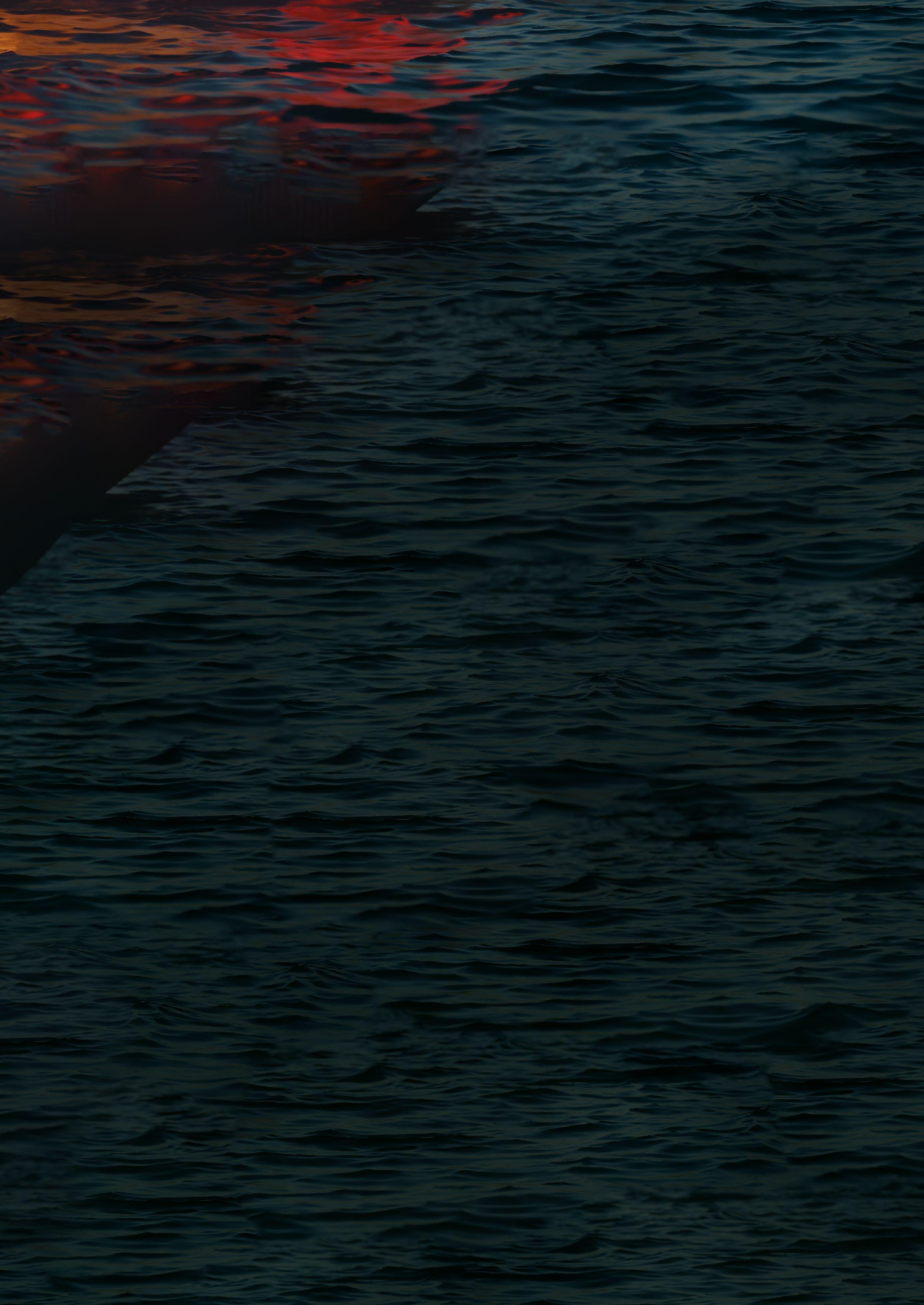
There are various R&D initiatives investigating the best water spraying method for this. One of these solutions is a pop-up nozzle that sprays water mist upwards and fixed and mobile solutions are now at the testing stage.
Fire onboard ships where EVs may be involved is now a genuine industry concern, and, referring to guidelines the European Maritime Safety Agency (EMSA) published in May last year, Mr Kolodziejski highlights some of the recommendations currently being proposed to limit fire propagation and allow for effective monitoring of the environment around EV cargoes and also easy access in the event of a fire.
For example, EV car-carrying ship owners are urged to consider increasing the space between each vehicle or reducing the number of units transported. Some ship operators are already requesting that batteries in used or second-hand EVs are disconnected prior to shipment, especially if EVs or their batteries show signs of damage.
“Prevention is certainly better than the cure at the moment,” said Mr Kolodziejski.
“Early monitoring and detection are becoming increasingly important safety factors for ship operators and crew. With an EV cargo, the earlier the crew can detect prefire conditions, the better.” u
www.survitecgroup.com


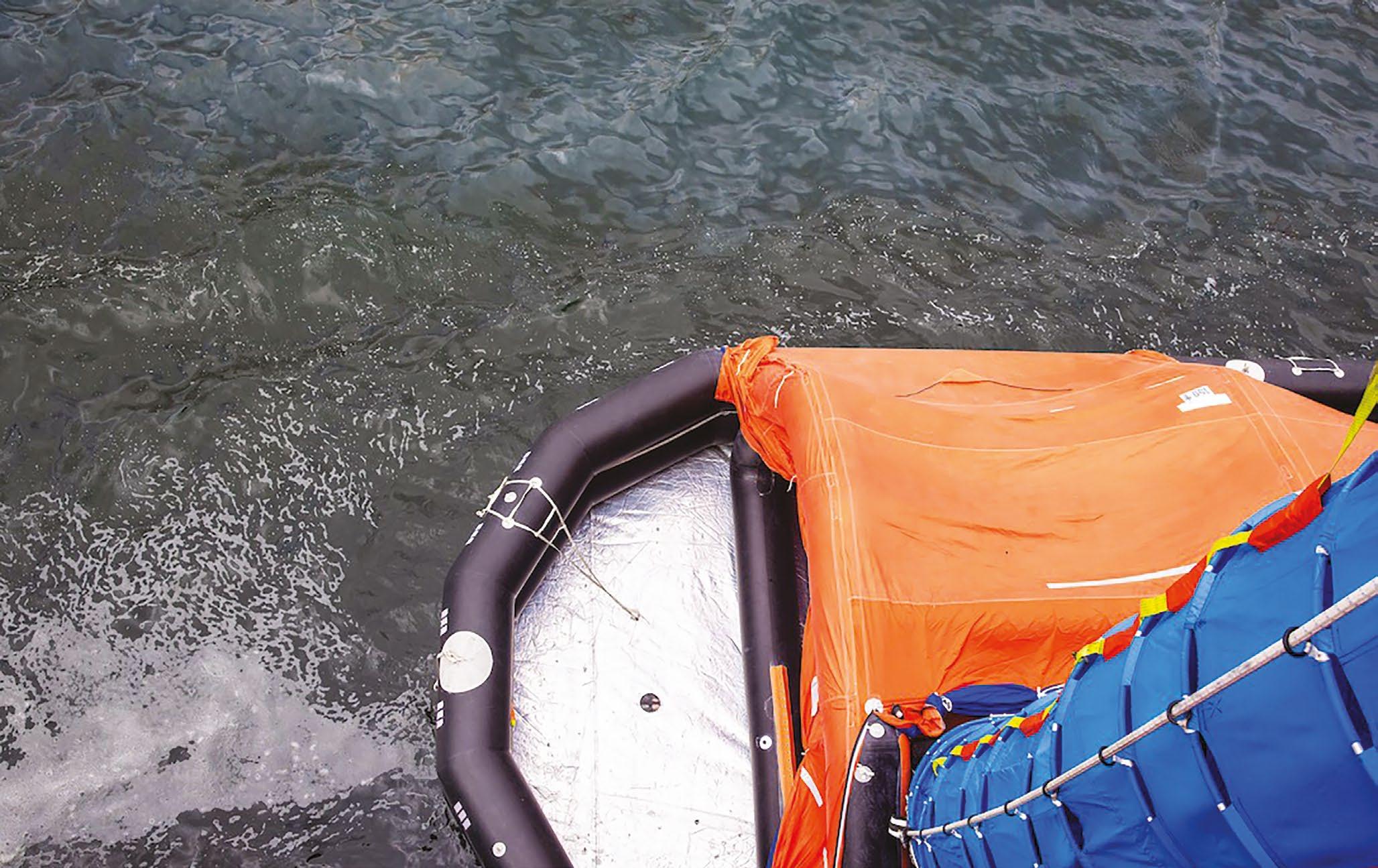
Following the launch at SMM last year, global Survival Technology solutions provider Survitec has announced that its new Marine Evacuation System (MES) Life Ark has received full-type approval from classification society Bureau Veritas.
Certification of Life Ark, a helical slide-based MES for small to medium-sized passenger vessels, follows the successful completion of stringent design and evacuation trials required under the SOLAS Convention and the EU’s Marine Equipment Directive.
Protecting passengers and crew on vessels with a freeboard height of up to 23 metres and passenger capacities ranging from 300 to 1,500 persons, such as ferries and expedition cruise ships, Life Ark builds on Survitec’s success and growing market share in the larger cruise ship market, where the company has installed some of the largest dry-shod MES systems on the most advanced cruise ships in the world.
Richard McCormick, AES and MES Product Manager at Survitec, said: “There is demand for an extended service MES solution with high functionality to serve the smaller passenger vessel market.
“We went back to the drawing board and took a fresh look at how we could adapt our cruise ship evacuation technology to meet the requirements of this market.
“Bureau Veritas Type Approval means that the smaller passenger vessel segment can now benefit from the same revolutionary helical slide-based MES used in the larger cruise ship segment.”
Andreas Ulrich, Global Market Leader Passenger Ships & Ferries, Bureau Veritas, said: “Marine Evacuation Systems have been proven as a safe and reliable means of survival and Survitec is one of the pioneers having developed such systems.
“BV is proud to have been chosen as a partner for the new Life Ark and has recently issued a MED TA certificate for the new system.”
Using the fully enclosed, dry-shod helical (spiral) slide design inherent to Survitec’s popular Marin Ark 2 MES and Seahaven AES, Life Ark ensures a safe, rapid and comfortable descent for people of all ages and abilities.
There is no restriction on the size of individual users, and crew can ascend the slide to assist passengers if necessary.
Fully enclosed single and double helical slide options are available in an asymmetric arrangement. The Life Ark comprises self-righting approved liferafts for 50, 100, 150 persons, with SOLAS A, B and HSC emergency packs.
Inflation takes place automatically within 60 seconds and minimal crew interaction is needed during this phase. Multiple buoyancy compartments provide stability and safety in the most challenging sea conditions.
Life Ark+ is available as a 30-month extended service option. u
www.survitecgroup.com
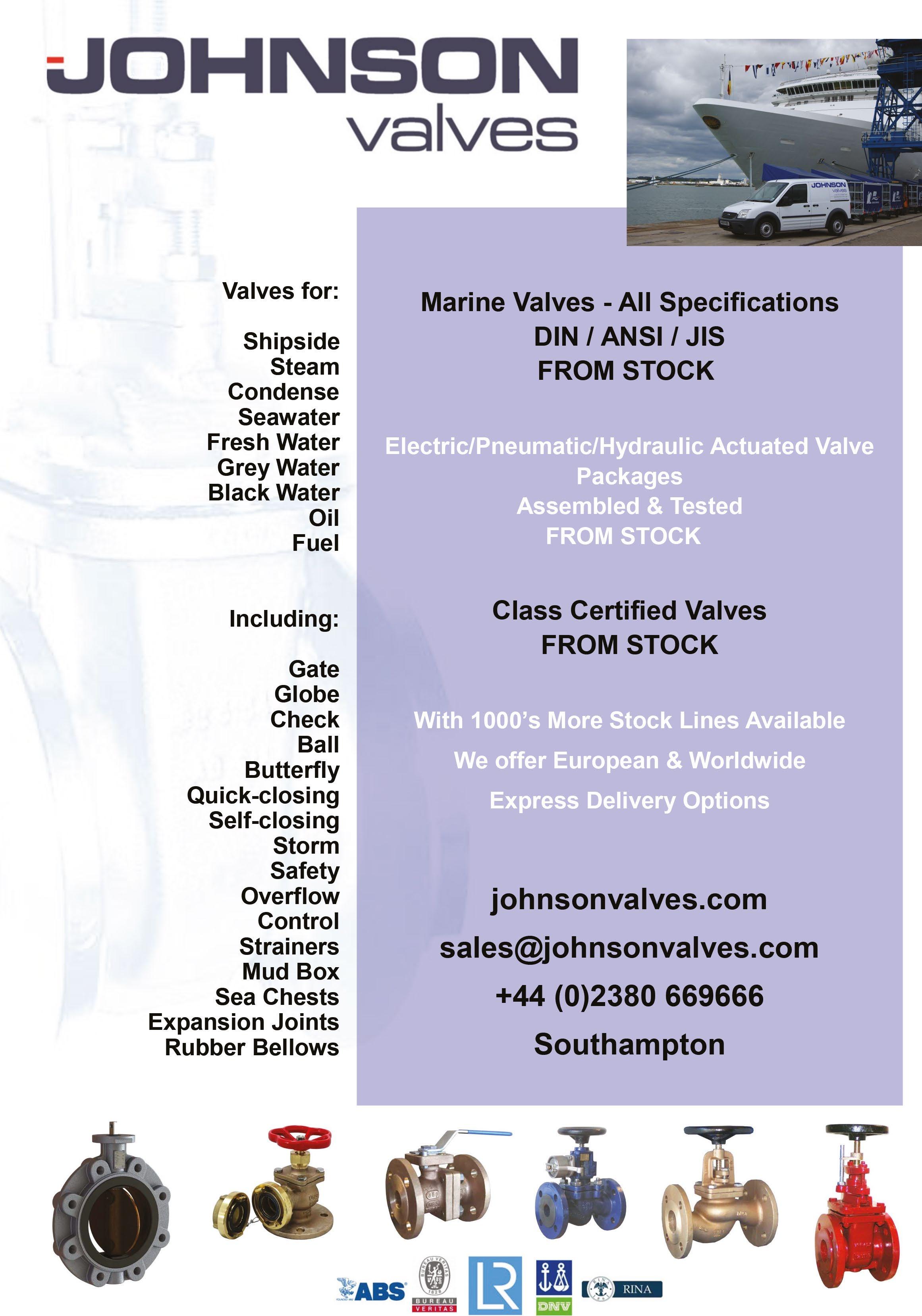
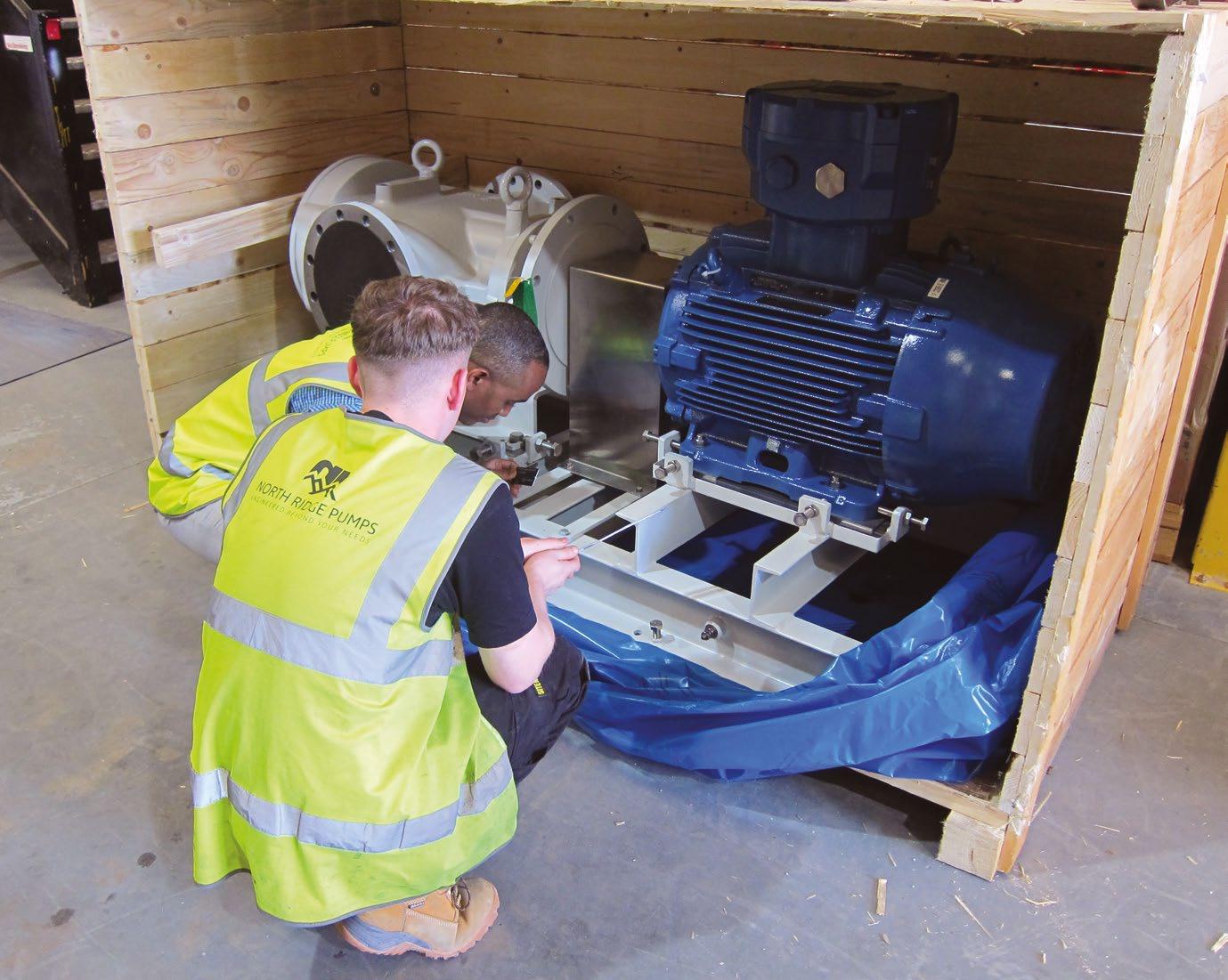
The challenge: diagnose and fix issues with a customer’s marine fuel pump. They were currently experiencing issues unloading light fuel oil (LFO) from their vessel at port with their current marine pump and were struggling to troubleshoot problems and solve them.
The port would regularly receive shipments of fuel cargo by vessel, with vessels docking over fifty meters away from the pump due to the dock’s design.
The unit at the time would operate for approximately 16 hours a day, unloading marine fuel for transfer to various oil storage tanks with the tanks located over three hundred meters away and which stood 10m high.
Enter North Ridge Pumps Ltd a UK based independent manufacturer and distributor of pumps with a pedigree dating back to 1998.
After discussions with the customer,
North Ridge identified several telltale signs that their marine pump was undersized:
· Their screw pump which tended to be quiet, was producing high levels of noise
· There seemed to be aeration of the pumped fluid which was detected by their Coriolis flow meter
· The Flow rate was less than what the unit was designed for which could not be improved by increasing unit speed
· Flow was turbulent, meaning there was the potential for inconsistent metering of unloaded fuel
-All symptoms of what happens when a pump is undersized. Furthermore, when the vessel used a pump onboard to boost flow, the issues disappeared.
During fuel unloading, a vessel will pull alongside the pump house and is held in place by guide ropes against the dock and its anchor.
To enable offloading to begin, a large diameter flexible hose (typically 6”) is connected from the vessel to the pump house, with the hose supported by buoys in the water to ensure it remains afloat.
Using a flexible hose ensures pipework is not placed under strain, or likely to break as the vessel bobs in the ocean with waves, or tides.
The flexible hose is then connected to fixed pipework onshore ready for fuel transfer to begin - once the installation has been grounded to prevent the build-up of static.
Once the discharge line is connected from the vessel, the tank valve onboard and pump are opened. The unit is started up slowly, enabling it to prime and fill with liquid before speed is increased.
There are usually controls in place to enable the filling of separate tanks as commonly one pump may be used to feed several tanks and in this case there were a total of four 800M³H LFO storage tanks.
Ships do not always dock to offload fuel cargo. Alternatively, ships can offload to Offshore Mooring Buoys (CALM Buoys) or Single Point Mooring Systems (SPM’s) which enables a vessel to discharge liquid cargo without docking.
The benefits of this are port congestion is reduced and pilots are not required to board to guide vessels. Furthermore, it allows deliveries to be undertaken to shallow draft ports by larger vessels which would otherwise be unable to be accommodated or in ports where ice formation may occur.
Unloading pumps are typically designed to produce high flows at low to medium pressures which are usually self-priming to ensure they can completely empty and strip a vessel’s cargo. Also known as stripping pumps, they enable
the complete discharging of fluid from tanks without manual intervention or residue remaining in holds.
They are designed to accommodate a wide variety of viscosities to ensure they can transfer a range of marine fuel oil derivatives from light distillate, medium, and heavy fuel oils without issue.
Pumps handling hazardous flammable substance are ATEX rated to ensure any source of ignition is removed, and should the pump produce a spark it is self-contained within the unit.
They may also have a motor suitable for inverter operation which allows operators to control oil transfer rates when oil viscosity, and source tank levels change.
Units can often be heat traced as a way of maintaining a fluid’s viscosity and flow rate or to prevent solidification within the pump head, with similar pumps also used in fuel bunkering and debunking operations.
The customer wanted three key features:
• A flow rate of 100M³H to 150M³H when pumping oil derivatives
• To draw fluid from barges with the pump located over 50M away
• Completely strip tanks without manual intervention, whilst varying flow as required to pump to tanks located over 300M away
Pump
For this North Ridge selected the NRPZ Self Priming Horizontal Triple Screw Pump, complete with an ATEX rated motor suitable for operation via Variable Frequency Drive (VFD).
Although pumps can typically only prime a maximum of 9.8M (based on water), and even though the suction pipework extended to over 50M away, in this particular application it was well within the capability of the design.
That is because most of the pipework runs horizontally, rather than vertically but care still needs to be taken to ensure that with the fluid’s viscosity, pipework diameter, and any vertical pipework sections do not amount to a pressure loss high enough to stop the unit functioning as it should.
The pump will produce varying flow up to 116M³H and can be controlled via a Variable Frequency Drive and deliver pressures up to 8 Bar. Coupled to a 45KW ATEX WEG motor suitable for operation via VFD the unit was assembled with 6” inlet and Outlet matching the customer’s existing pipework.
The new unit will significantly speed up vessels’ unloading and enable the customer to have greater control over their process, with the issues experienced by the current unit, such as noise, and low flow rate also resolved.
Product link: https://www.northridgepumps.com/p_1317_ north-ridge-pz-series-triple-screw-pump u
www.northridgepumps.com

Digital technology is essential to an effective strategy that ensures critical valves onboard vessels are monitored and managed effectively. Kristof Adam, Managing Director at W&O Europe, explains why having the right support for dry dock projects helps turn them around quickly and efficiently, while reducing the risk of error.
Fitting Radio-frequency identification (RFID) tags to critical valves onboard ships helps operators avoid costly delays and facilitates smart maintenance strategies. Yet some operators remain unaware of the benefits of good valve monitoring, even though these can be significant.
The initial specification of valves for a vessel – the materials list – is often an inaccurate representation of the valves that are actually onboard; replacements, retrofits and discontinued valves all mean that slight changes in specification can occur over time.
As a result, many vessel operators lack even basic identifying information about the valves they have on their ships - such as type, material, age or size. Identifying them in onboard surveys requires significant skill and expertise.
This lack of insight increases the risks of delivering the wrong valve in the event of an unexpected breakdown. Replacements may not be fit for purpose or could even lack essential class testing. Such errors in valve ordering have the potential to delay projects and waste money as the cost of
stranded assets stacks up over time.
A single consolidated asset tracking solution using RFID tags offers easy asset history tracking, accurate specification, and centralised asset maintenance records and test certificates.
The tags can safeguard essential information from across a valve’s service lifetime. This includes manufacturer, valve size and materials of construction, shipping and installation dates, actuator data and settings, testing certificates, inspection history and condition reports along with inspection photos.
This information is important for teams preparing for a dry dock project. While a pre-dry dock valve survey can minimise the risks of getting valve orders wrong, using RFID tags means the survey team can simplify the process, accelerate it, and eliminate error.
They make valves easily identifiable and connect them to a digitalised valve inventory that allows a dry dock project team to be certain of the valve type. With this understanding, critical needs can be met - such as class society testing ahead


of time - and valve installation during dry docking is quicker and simpler.
W&O supports optimal dry-docking outcomes using its database of available valves to specify correct replacement parts. The supply chain is mapped to provide the right valves for dry docking and to ensure spares are available onboard or at port.
With its global footprint, W&O can ensure fast and efficient supplies for any type of valve, anywhere in the world, which reduces the need to air freight valves to the right location.
Without expert technical knowledge, project teams risk buying valves based on what is available rather than what is most suited to the job. A rushed surveying and ordering process increases the risk of sourcing incorrect valves, invalidates quality control measures and increases transportation costs, as urgent parts may need to be flown to the dry-dock location.
By digitising valve identification, the crew, technical departments and purchasing groups will find it easier to track when valves need replacing and find the right parts. It is also possible to link this data to fleet purchasing systems to ensure that operators can supply their vessels with the right valves at the right time, wherever they are in the world.
Accurate valve identification and monitoring enables adoption of a time-based preventative maintenance
approach to valve replacement, avoiding potentially catastrophic failures at sea.
Making valve data available through a smartphone app increases the safe management of valves onboard the vessel as it becomes much easier for operatives to look up and verify actuator or relief settings for the valves they are working with.
The budget spend on valves is only a very small percentage of the total running cost of a fleet, but it can be hugely costly when this process goes wrong. By using RFID tags and digitising valve management, operators will improve the safety of their operations and reduce the risk of financial losses due to errors. u
www.wosupply.com
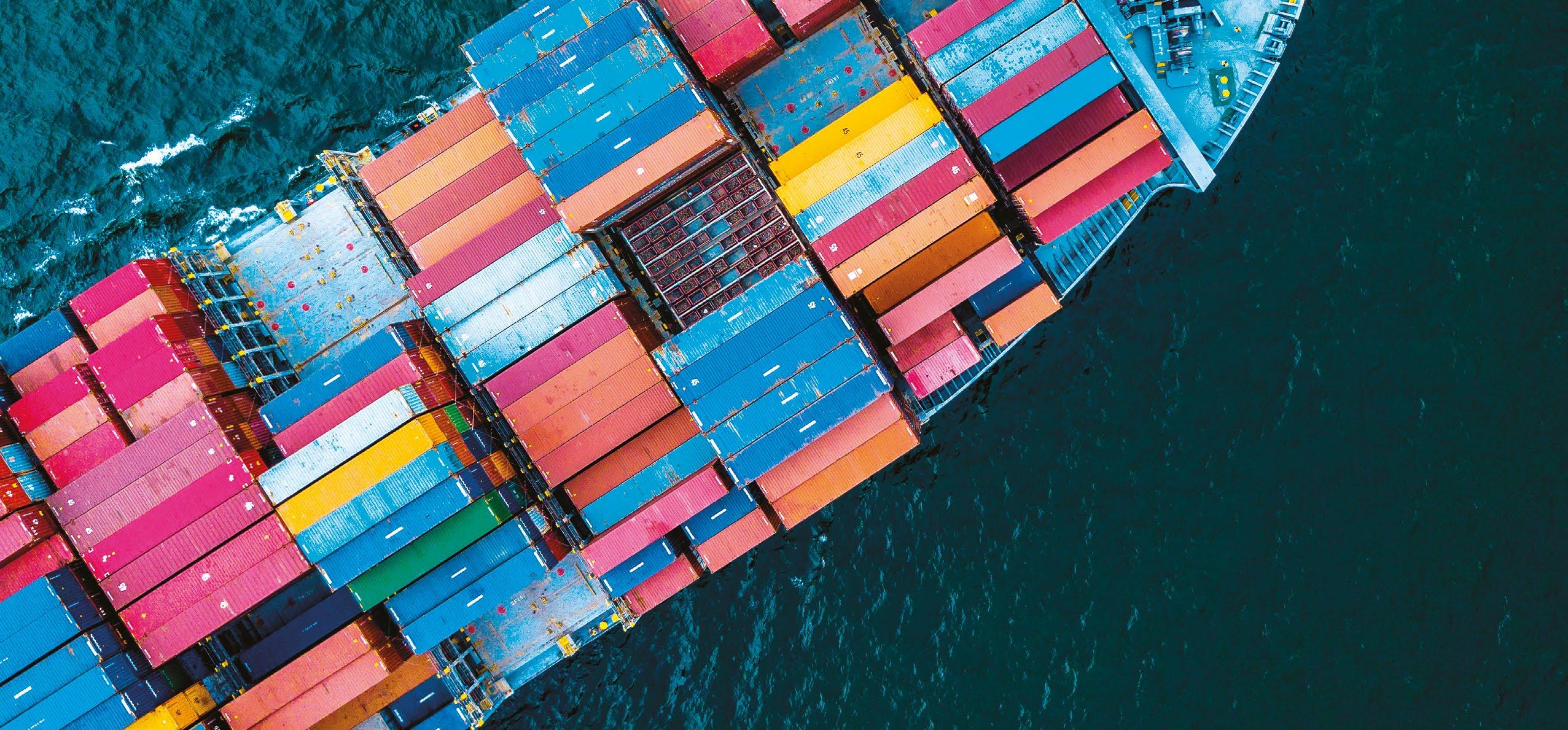




At Atlas Marine Valves , a member of Atlas Sea Group, we have specialised in worldwide deliveries of JIS & DINS standard marine Valves and butterfly valve spares, which we supply from our stock points in Turkey ,Singapore and Korea.
With our hands-on experience in the general ship supply industry for more than 40 years (since 1979), we are able to understand and to cover the critical valve & fitting needs not only during vessels’ dry docking in Turkey and in Singapore , but also their valve supplies around the globe harnessing the expertise of our expert valve team.
Thanks to our experienced sales & logistics team, we provide fast and accurate responses to customers’ worldwide valve inquiries.
To ensure trouble-free installation all quotations are sent through with full dimensions and technical drawings.
Our JIS standard Valves are produced in Korea and Turkey on our behalf under the trademark of Atlas Marine Valves. Our foundries are Class approved by DNV, LR, ABS, BV, KR and ClassNK.
We strictly follow MARPOL & IACS rules and keep a substantial stock of those critical valves with proper body & seat materials.
Besides the complete valves, we have a large stock in Korea and Turkey of original butterfly, valve spares (NBR, RTFE, VITON Seats, Discs, O-rings and screws, stem, bushing, packing etc.) of KEYSTONE VALVE KOREA.
Atlas Marine Valves with its sister company Atlas Ship Supply, are your Solution Provider for B.W.T.S. Projects.
We can provide a wide range of marine valves and cables covering all possible uses on board a vessel with a large stock capacity and we arrange worlwide deliveries throughout our warehouses and stock points. u



$1m a year in savings says AkzoNobel if you use their new tank lining.
Here they set out their case for consideration

Through the launch of its new Interline® 704HS tank lining, AkzoNobel International® introduces new operational efficiency and sustainability standards that can save cargo operators up to $1 million a year.
As a substitute for the renowned Interline 704, the pure epoxy coating has been developed over the past four years, and with a drying time improved by 25%, it can save time per project, resulting in lower labour costs.
A pure epoxy coating, Interline 704HS possesses a unique high solids formulation resulting in less of the product being required and fewer VOCs being released - improving coverage, cutting down on waste and also the impact on the environment.
In development over the past four years it has been designed as a replacement for the renowned Interline 704.
Approved for use with 76% of the world’s most traded chemicals by volume, Interline 704HS provides the same flexible cargo coverage as its predecessor, while also being suitable for Black Water, Technical Water and Laundry Grey water tanks. In addition, its FDA compliance makes it suitable for the carriage of liquid foodstuffs.
Through use at new building or in maintenance and repair within all marine
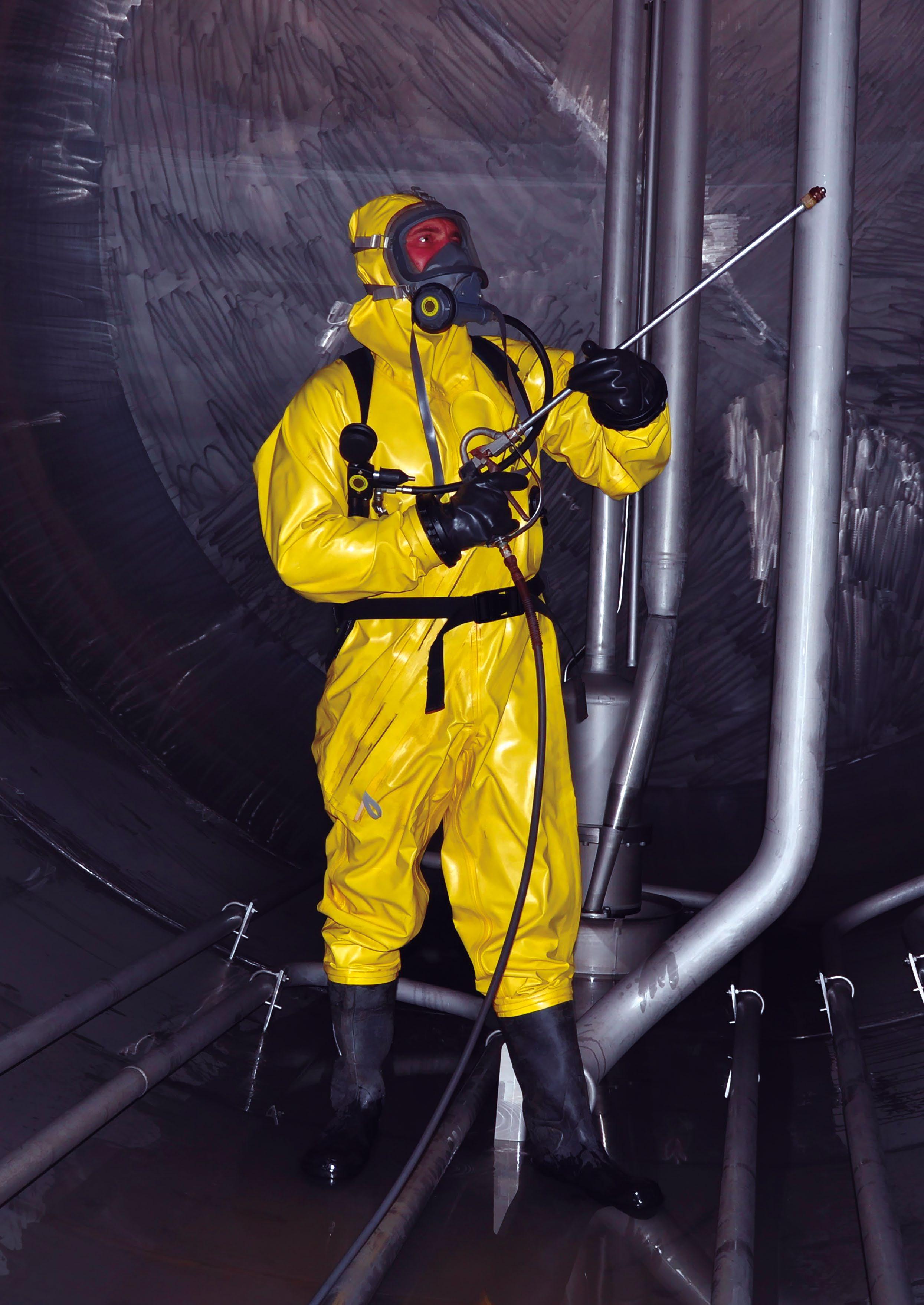
sub-segments, operational costs are slashed as a result of it providing the fastest return to service times in the market, increasing earning potential by up to eight days.
And with drying time improved by 25% it can save up to five days per project, driving down labour costs.
AkzoNobel Marine Coatings Marketing Manager, Chris Birkert comments: “Interline 704 has been the industry benchmark in pure epoxy technology with a proven track record of over 25 years.
“And now, as the marine industry continues moving forward on its decarbonisation journey, we remain determined to continue harnessing innovation to support these changes.
“The high solids formulation of Interline 704HS means lower paint consumption alongside 50% fewer VOCs released into the environment than that of its predecessor, makes it fully compliant with all current VOC legislation globally.
“Suitable for the safe carriage of over 2,000 cargoes and with stand-out operational efficiencies that can total over $1.3million in savings for operators, we are immensely proud to unveil this cuttingedge product we hope will set a new benchmark for years to come.” u
www.akzonobel.com

High VOC, low VOC, zero VOC—these days, it can be hard to keep track of VOC regulations for coatings— especially since they often vary from region to region.
The bottom line is that, typically, the more VOCs that users can avoid, the better.
Cortec® offers these suggestions for navigating the world of paint VOCs, particularly when it comes to Cortec® Coatings for metal.
Why Do VOCs Matter?
VOCs are volatile organic compounds that vapourise into the air as a coating dries, causing a potential health hazard for those that breathe in the paint fumes.
Because VOCs contribute to the amount
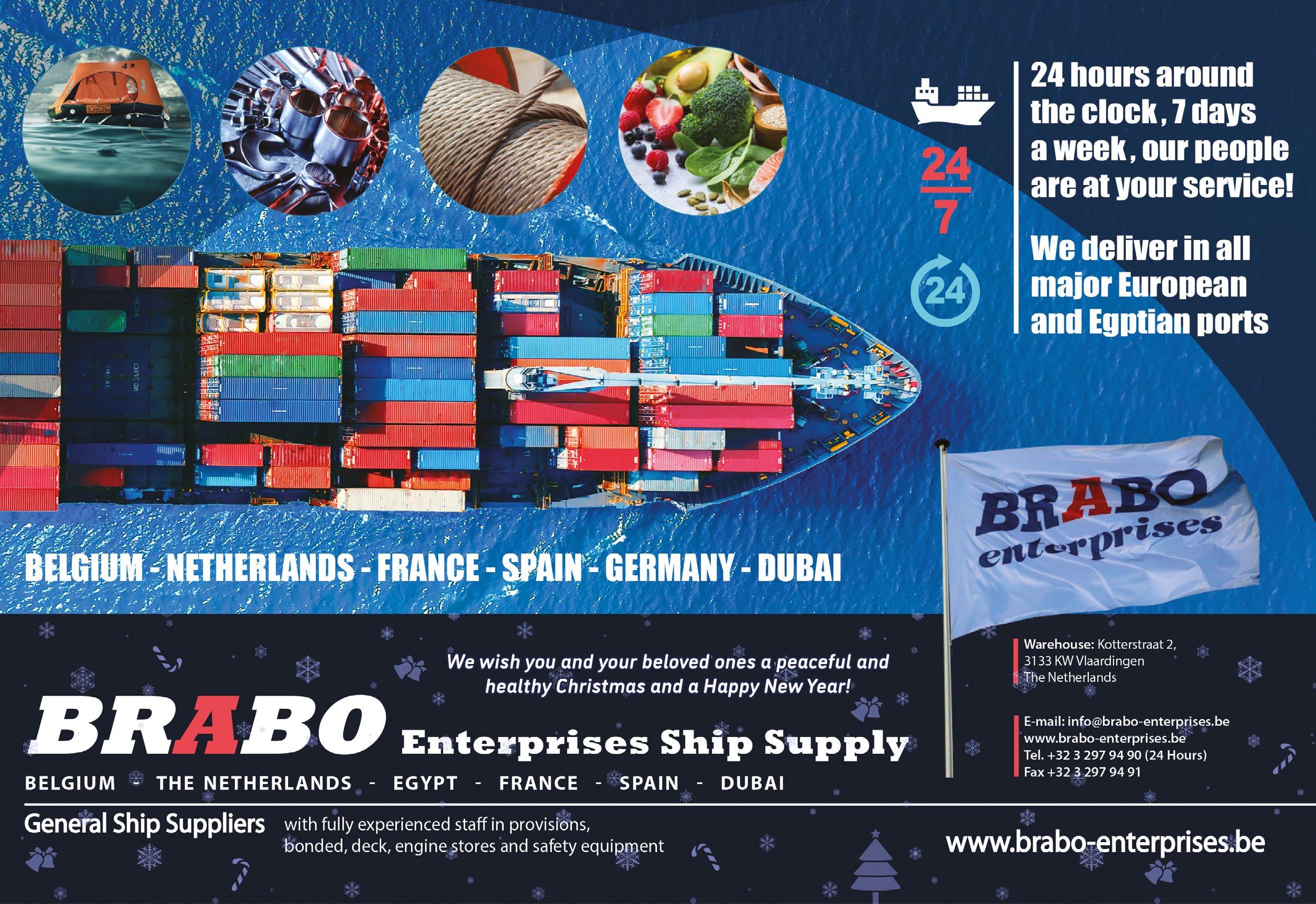
of ozone in the air (a health hazard to humans), the U.S. EPA has been in the business of regulating these substances for more than two decades.
Coatings industries are required to calculate VOC levels and report these results. Generally, industrial coatings with VOCs less than 3.5 lbs/gal (420 g/L) (all Cortec® Coatings) fall within VOC compliance at the national U.S. level, although coating users ultimately must verify and comply with local guidelines.
The terms “low VOC” and “zero VOC” have also become popular, mostly in reference to consumer paints.
While meeting these levels is not necessarily mandatory for industrial users, it does provide a helpful rule of thumb for those who are looking for ways to be “greener” or comply with environmental health and safety requirements at their own company. The generally accepted level for “low VOC” is <0.41 lbs/gal (<50 g/L) and for “zero VOC” is <0.04 lbs/gal (<5 g/L).
Many Cortec® Coatings fall into the lower range of VOCs (especially those that are water-based). Several are low VOC or zero VOC.
Others that do not quite meet the low VOC definition still fall well within the range of compliancy in many regions.

While a general rule of thumb is to opt for lower VOCs where possible, sometimes other factors such as application needs and customer specifications play into the decision and call for a coating that may not qualify as the lowest VOC on the list.
The following chart includes VOCs of some of Cortec’s most popular or significant coatings to help guide selection. u

www.corteccoatings.com

It is all change in the world of ship management. The year started with the announcement that two of the biggest managers, OSM Maritime (OSM) and Thome Group (Thome) are to merge. OSM is headquartered in Norway and claims to have close to 700 ships under management through a network of 21 offices worldwide. Thome, based in Singapore but of Norwegian heritage, says it has nearly 370 managed ships and a presence in 11 countries.
Although the vessel numbers appear to indicate a disparity in size, many of OSM’s contracts are for crewing only. The two companies were side-by-side in 5th and 6th place respectively in the Lloyd’s List Intelligence league table of the world’s largest third-party ship managers in 2022, with 430 and 400 ships respectively.
Assuming the merger does not cause ship owning clients to
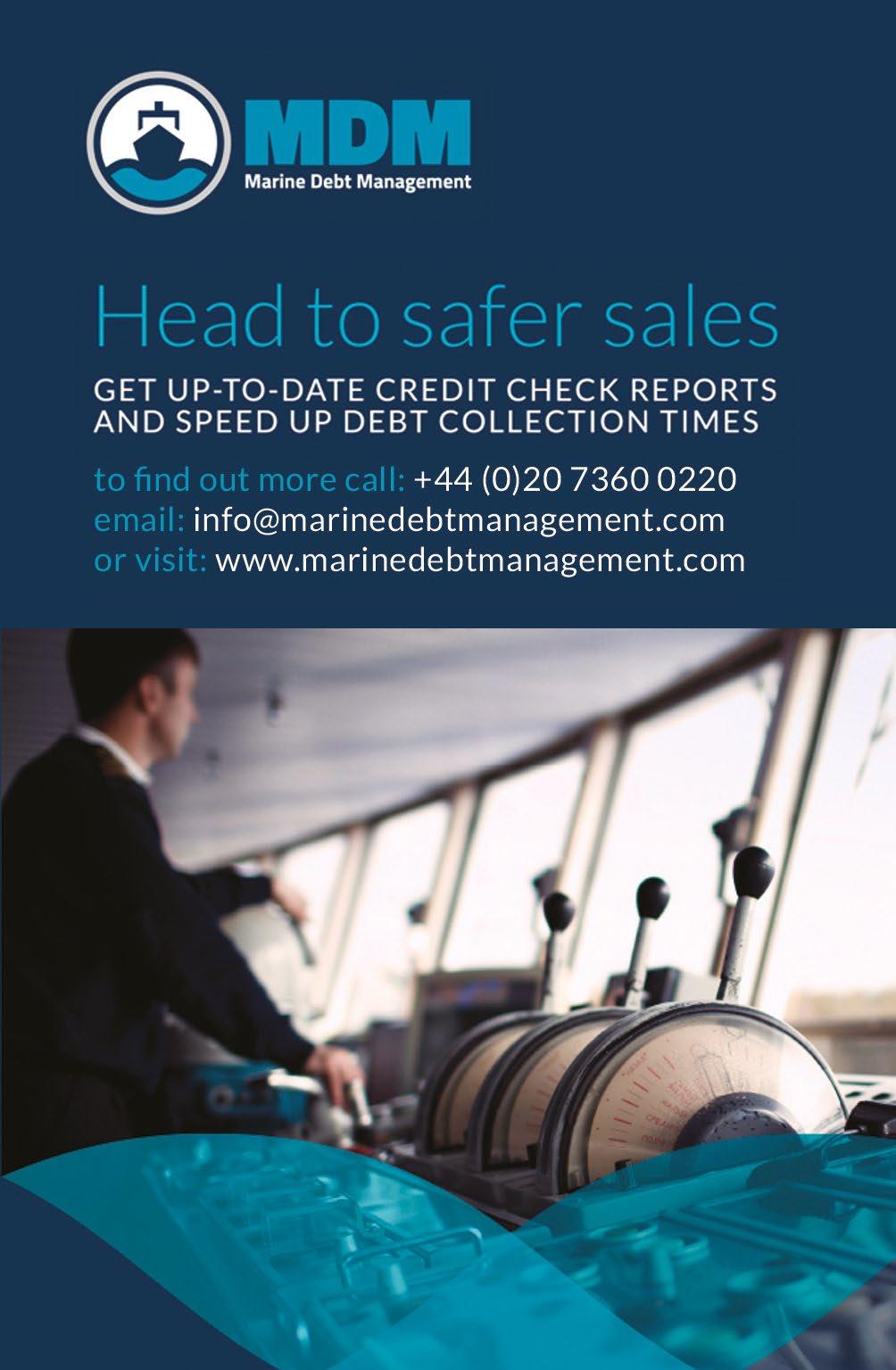
go elsewhere, it will catapult the new company, to be named OSM Thome, into the number one spot ahead of Anglo-Eastern and V.Ships.
The numbers indicate it a merger of near equals with both parties bringing something to the table. OSM is stronger in Europe, Thome in the Far East. OSM has been on the acquisition trail for sometime, boosted by the 49% stake in the business taken by Oaktree Capital Management (Oaktree) in 2018. Headquartered in Los Angeles, Oaktree is a fund management company with approximately USD 170 billion of investments. It holds significant shareholdings in several ship owning companies. Since it acquired its stake in OSM, at least four ship owners have contracted the company to take over their in-house ship management functions.
Both OSM and Thome have been innovative in how they negotiate with and are renumerated by suppliers. OSM established OSERV in 2017, whilst Thome created Vanir Marine in 2021. Both companies also serve ship owners who are not clients of either ship manager. It will be interesting to see whether they too will be “merged”.
Norwegian roots were what brought OSM and Thome together. Will geography play a part in the next ship management merger? If so, will it be in Germany or Hong Kong?
At the other end of the ship management spectrum, a multitude of new companies have emerged in recent months. They are responding to record levels of activity in the ship saleand-purchase (S&P) market. Mostly these companies are the creation of one or two persons, often previously employed by a larger, established ship manager.
As always, with ship managers it is important to know who they are working for. It is a case of not only know your customer but know your customer’s customer too. Does the ship manager perform adequate due diligence before accepting a new client’s vessels into management or are they more concerned about their ranking in the league table of ship managers? Naturally, their ability to settle your invoices will be directly related to receiving timely funding from the ship owner. It is always worth asking yourself, “Would I grant this owner credit if they approached me directly?.” If the answer is, “Probably not,” then their use of a thirdparty ship manager is unlikely to change your decision.
The ship management forest contains mighty oaks and the thinnest reeds, as well as everything in between. Ship suppliers intending to feast in the forest need to keep their bearings and tread cautiously. u
Ship suppliers are not of course only concerned with timely delivery of supplies to their customers’ vessels. They must also take care of their own purchasing, to ensure that the ordered goods are received by them safe, sound and in good time. This article looks at some of the risks and issues to be considered in your own purchasing.
If it looks too good to be true, it probably is! This is advice that you may have been given by your parents, or early in your business life, and it stands the test of time.
Fraudsters depend upon our “eye for a bargain”, to hook unsuspecting victims into their traps. Sometimes these traps are nothing more than a website or on-line shop offering temptingly low prices or delivery times that cannot be achieved elsewhere.
Sometimes the schemes are more sophisticated. For example, an enquiry is issued to a supplier for an expensive and very specialist part (a part which in fact does not exist at all). The fraudster also sets-up a website or on-line shop where that part can thankfully be purchased. The supplier is usually pleased to find that with its efficient google searching, it has located this unusual part, negotiates a significant mark-up to the “purchaser” and then happily makes the purchase. The problem is that part does not exist, neither does the seller (or the “purchaser”) and once the purchase monies are paid the fraudsters disappears.
There are hundreds of accounts of buyers who received a container full of rocks or other worthless junk, or no container at all, having purchased from an unknown on-line seller. Online trading has opened up a whole new world of fraudulent enterprise, and it is all too easy to become a victim.
Effective due diligence is essential; trade references from verifiable parties must be taken. Beware site visits to factories and warehouses that may actually have no relation to the purported seller/manufacturer.
The terms of purchase can give rise to different risks. If you purchase goods ex-works from a distant seller, then that does of course put responsibility on the buyer to arrange the transport. It is tempting to purchase on terms that put that responsibility on the seller. However, with the assistance of an experienced freightforwarder, arranging your own transport need not be considered impossible and may indeed be preferable, giving you practical control of the shipment and the costs.
You can at least be certain that the goods have been loaded and collected by a bona fide carrier (you may wish to engage someone locally to witness loading). In particular, if you have regular traffic from a particular country you should consider whether purchasing ex-works may be better for you.
Goods should always be insured. It will not be possible to insure against the risk of a “phantom seller”, but insurance for risks of loss or damage during carriage is always recommended.
The case of the “Ever Given” blocking the Suez Canal is an example of the importance of insurance.
Although no cargo was lost or damaged, there is a significant General Average and Salvage claim to which the owners of all cargo on-board are required to contribute. Shippers without cargo insurance are typically required to provide cash bonds, in a significant proportion of the value of the goods, before they can take delivery. This is a huge additional cost, compounding losses that may already be arising due to the delay.
Where cargo insurance is in place, the insurers will provide the necessary bond (actually in the form of a guarantee) and the shippers will not carry the burden.
Of course, where goods are lost or damaged, the insurers will settle any claim. Without insurance, such claims may not be recovered in full, because the various conventions that apply in relation to goods being carried by sea (or air or international road carriage) mean that the carrier’s legal liability is rarely equivalent to the value of the goods.
Care must be taken at all stages of your purchasing supply chain, to avoid risks of fraud, cargo loss or increased costs due to delegation of the shipping to the seller. u
Bruce Hailey is a Solicitor specialising in ship supply advice
bh@salvuslaw.com

We are constantly dazzled by the advances we see in maritime technology. It seems the maritime world attracts keen interest from innovators. This time we show-case three exciting developments – and a well-deserved award – that defies the notion technical development may have stalled.
Elcome International, a leading provider of maritime systems and integration solutions, is providing SpaceX’s Starlink internet services to its global maritime and mobility customers.
From merchant vessels to oil rigs to luxury yachts, Starlink enables maritime customers to connect from the most remote waters across the world, just like they would in the office or at home.
Starlink is one of the most significant advancements in communications for the maritime industry in decades.
Powered by the world’s largest constellation of satellites in low Earth orbit, Starlink’s high-speed, low-latency broadband Internet service for all types of maritime and offshore assets is a revolution in performance and cost.
With speeds up to 100 times faster and at a fraction of the cost of traditional satellite internet services, Elcome will equip its customers with cutting-edge technology-led solutions that leverage the unique capabilities of Starlink. u
https://elcome.com/starlink


International maritime logistics provider Marinetrans is now partner of the foiling hydrogen boat project of Delft Technical University.
Together with others Marinetrans now supports this diverse team of students to compete with a foiling hydrogen-power boat in the Monaco Energy Boat Challenge, showing the maritime industry practically viable sustainable propulsion solutions.

At Marinetrans, several emission-reduction schemes are currently unfolding, including its own CO2 Offset Programme that clients can take part in to counter the environmental effects of their operations and the transport solutions handled by Marinetrans to make them happen.
The TU Delft Hydro Motion Team was founded to show the maritime industry a number of opportunities to tackle industry-related climate challenges.
The dynamic programme has a new team of 20+ students formed every year aiming to push the boundaries of sustainable technology.
This year, the team consists of 23 multidisciplinary students who explore innovative developments in collaboration with industry experts, partners and alumni. Over the course of 17 years the teams built a number of solar-powered vessels (top speed of 55 km/h / 29.7 knots!), switching to hydrogen propulsion in 2021 and, among other results, delivering the first foiling hydrogen-powered boat in the world. u
www.marinetrans.com


Greensea Systems, Inc. (Greensea) has been awarded the Rising Tide Award as the ‘Industry Awardee’ during the Blue Innovation Symposium (BIS) held in Rhode Island, USA, earlier this year. The prestigious award was presented to Greensea’s CEO Ben Kinnaman to acknowledge the firm’s significant contributions to the blue economy through technology innovation, collaboration and leadership.
“I am humbled by this award,” said Mr Kinnaman. “It’s a terrific honour to accept the Rising Tide Award on behalf of Greensea.
“I can’t help but to think back over the past 17 years, and the trials and tribulations of developing software for the demanding ocean environment and of all the people who have helped along the way. It’s great to have Greensea’s efforts and impact recognised.
Greensea Systems Inc. was founded in 2006 to design and create a commercially available open architecture software platform to break down siloed technology in the subsea environment.
The resultant open architecture software, OPENSEA® with its central library software suite, is the most powerfully integrated control and navigation technology available in the market today that is easy to use, easy to maintain, robust, and portable.
The company works with leading OEMs throughout the world providing the OPENSEA platform on hundreds of installations to the offshore and military industries. u
www.greensea.com
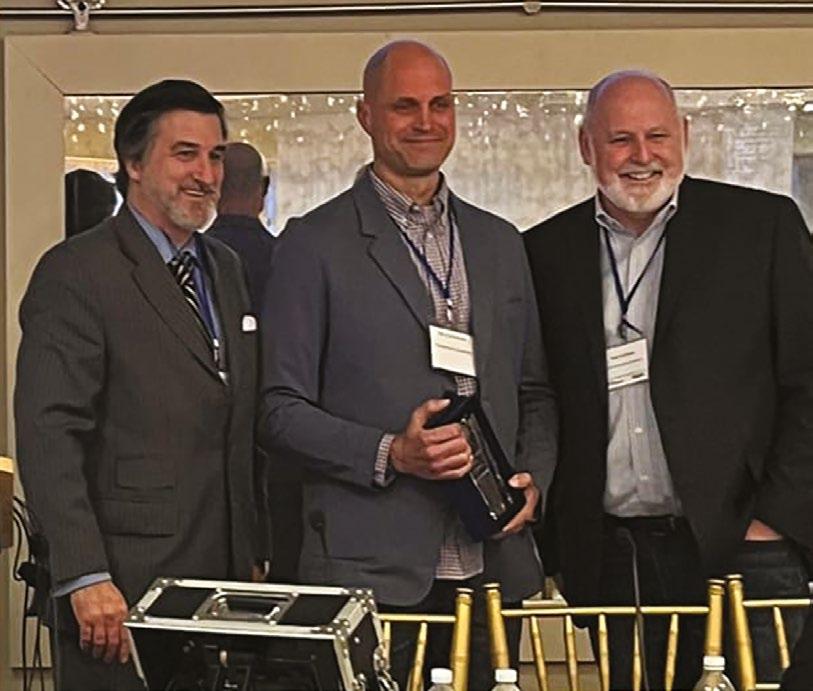

Why are lightweight slewing rings, (bearings), rapidly becoming the first choice for design engineers in demanding motion control applications?
Quite simply, where absolute accuracy, optimum mechanical performance and good corrosion resistance is essential, lightweight slewing rings have been proved in the most challenging applications.
Karl Brundell, MD of bearing specialists Carter Manufacturing, explains: “Put simply, a slewing ring or bearing allows design teams to replace paired bearings with a single item, which reduces parts count, weight, complexity and cost.
“Whilst there are many slewing rings available for less demanding motion control applications, the choices for high technology applications are limited.
“A slewing bearing is designed so that the rolling elements create a reactive movement within the bearing when under load, this opposes the existent overrunning (or overturning) loads which are present in the motion control application.
“This is critical to designers of military land, sea and aerial equipment where smaller size makes vessels, vehicles and UAV’s more difficult to see or track in operational use. u
https://www.carterbearings.co.uk/bearings/ lightweight-slewing-rings

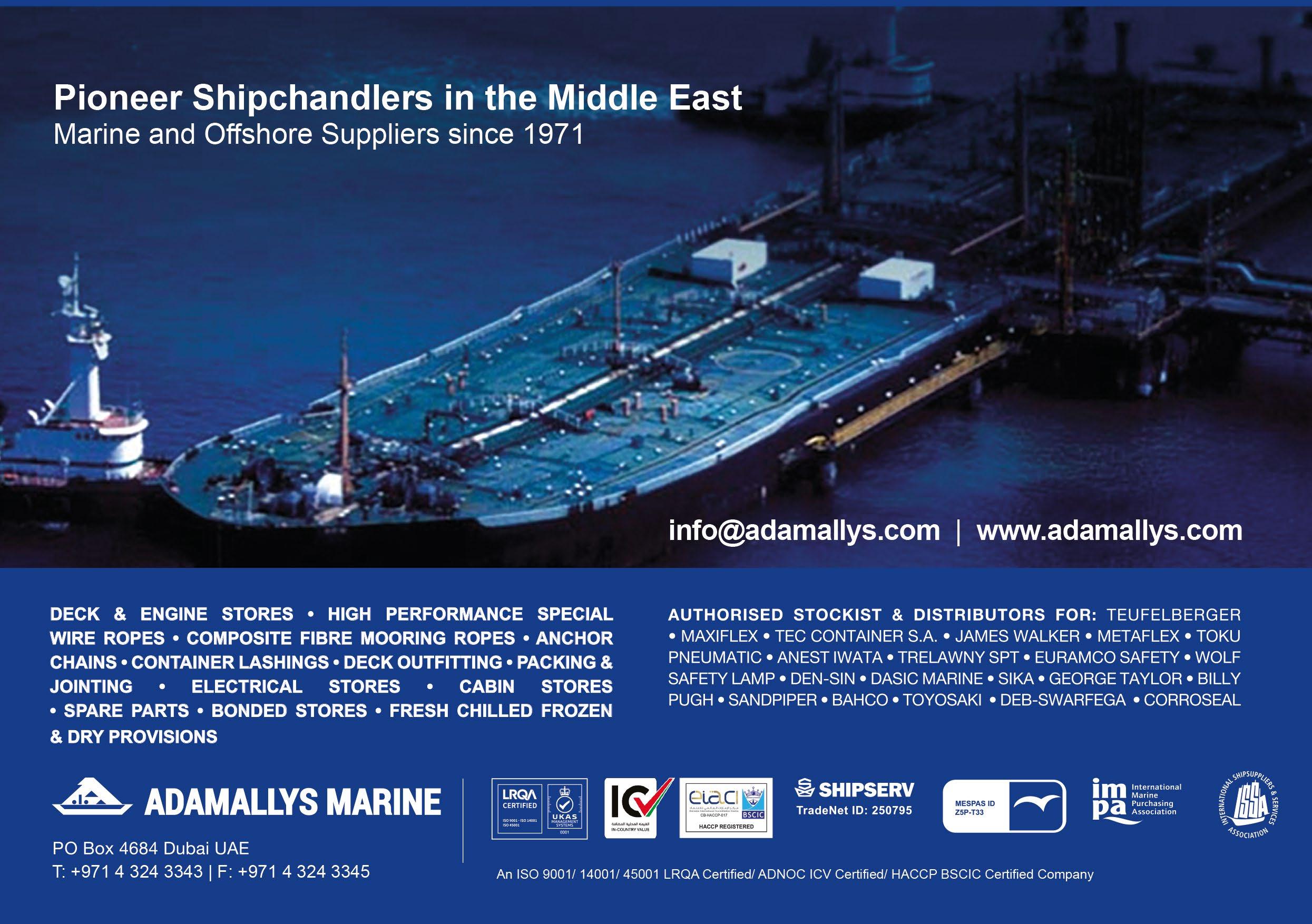


News reaches us of the sad and premature death of Craig Williams, doyen of ship supply in Cape Town. It was in June 1979 that Craig and his wife Pamela moved from Port Elizabeth to Cape Town.
He started work at Chandling International – part of the Rennies Group which included Freightmarine Shipping and Rennies Ships Agency. Rennies Group was the holding company for these.
Craig was Japan Marine Supplies Manager (JMS), a division within Chandling International.
During his time as JMS Manager, one of his responsibilities was looking after the Japan Tuna Seamans Club in the harbour.
This was a restaurant exclusively for use by the crew from the vessels. This is where he met Mr Chris Kotze, who would become a long-time friend.
In due course Craig was appointed Operations Manager at Chandling International (still within the Rennies Group).
Later, after leaving Chandling International, Craig was instrumental in opening Cape Town Ship Suppliers & Exporters (Pty) Ltd in 1994.
He was designated Operations Manager at the fledgling enterprise and remained in contact with his friend Chris Kotze who was managing Japanese Ship Suppliers.
Craig maintained the responsibility of supplying the Japanese fishing vessels coming into port, in addition to continuing to supply all the other nationalities’ vessels.
Craig was well liked and respected in the maritime industry and throughout his long and successful career in ship supply he met many people, most of whom would become dear and firm friends.
During his working career he met a lot of people and most of them would become dear friends.
Craig retired from the business on 31st March 2017. u




TMiddle East Fuji, a leading marine supplier of ship provisions and various types of spare parts, maintenance and operational services, is keeping up with the market’s developments and technologies as a strategy to meet new sectors’ requirements, including the railway and the industrial sector in terms of construction, oil and gas production.
he company’s President & CEO Saeed Al Malik, told us about Middle East Fuji, the company that celebrates 30 years in the marine supply business in 2023, with a premium goal to be a one-stop station with for services.
Al Malik, Former Vice Chairman of Maritime Advisory Council, Former member of Trustees Emirates Maritime Arbitration Centre, also Chairman of the International Ship Suppliers & Services Association (ISSA) since 2018, being the first Arab to head the association, and president of the UAE National Ship Suppliers Association (UNSSA) highlighted ISSA’s effective role in the maritime and industrial sectors while following development plans and protecting the interests of ship suppliers.
As President and CEO of Middle East Fuji, what can you tell us about this journey?
We are in our 30th year in this business since 1993. We collaborated with Fuji Limited in 1998 to cover the Middle East area through our offices in the region, and I sold some of my shares to Fuji Limited in order to merge the two companies, since Fuji Limited is a large global company present around the world covering East Asia, Europe and North America.
The company that I have founded later became Middle East Fuji, established in Dubai. After that, we expanded in the United Arab Emirates, Oman, Qatar, Saudi Arabia, Northeast Africa and
Djibouti. The company started out with 15 employees at the time, whereas today the number of employees is 290, as it offers ship agency services, and various ship supplies, from A to Z.
This has been Middle East Fuji’s main goal all along, to be a one-stop-station providing all services, which also includes dry dock services, since we are a link between the dry dock and the Federal Transport Authority Land & Maritime FTA. This is in addition to shipbuilding services, as we offer our aid in this process through our connections with shipyard operators. We have also expanded into other fields like general trade, i.e. import and export from UAE to East Asia and Africa.
We also worked on offshore projects as we have a clear understanding of what ships and offshore platforms need. This is in addition to our business in heavy industries, where we represent many international companies, with the help of a team of 55 people, including 30 construction engineers.
What are Middle East Fuji’s plans over the next three years?
The Middle East region is constantly evolving with an increasing population, demanding more projects and services, and in that aspect, we have plans to renovate our ideas. The action plan that we have set for the region during the next three years is to keep pace with the market’s developments and requirements in other sectors, mainly the railway and the

industrial sector, with plans to develop it in terms of construction projects and the production of oil and gas, all in line with the maritime sector’s developments.
In 2023, the company celebrates 30 years in the field. How do you summarize this journey and what are your prospects of the future?
We see a bright future for the company, as we are in continuous success, and there is no doubt that following market’s developments and conducting the necessary studies, in addition to a good management and adopting digital solutions (30% of our systems use artificial intelligence) would contribute to our positive outlook towards the development and expansion of our services.
There is a continuous development meant for our company and the private sector companies, which I believe will continue to succeed if they work in the right way.
Recently, IMO has issued many regulations addressed to shipowners, mostly related to decarbonisation, and fuel. How do you view these measures and their impact?
Discussions regarding these matters are still taking place among the different maritime sectors, such as ports, shipyards, shipowners, and service providers. As for IMO’s environmental
legislation, we see that there are some flaws in the development of regulations that lack experience in the details of the maritime sectors; however, we still need them. Similarly, we have some notes regarding the declaration of dangerous goods, which includes some chapters that place responsibilities upon service providers that are not within the scope of their work. Therefore, we seek, through the IMO’s working team, to make some adjustments regarding the obligations that we make before providing our services.
You are the first Arab to head the International Ship Suppliers & Services Association (ISSA). How do you see this responsibility?
It is certainly very time consuming, to follow up on the weekly calls with the office in the UK. Our role in the association is quite beneficial for all 2000 members around the world; with 40 countries as members. This association, registered in The Hague, Netherlands since 1955, aims to protect the interests of ship suppliers, and its primary responsibility is to protect the welfares of ship suppliers that share a relationship with several other institutions, such as the private sector companies that manage ports, which mainly affect the speed of providing services without having the required experience. As a third party, we are specialized in supplying provisions,

and every other thing that the ship needs.
Some ports might request providing supplies directly through their agents, which we think is a problem considering the agent’s lack of experience in this field. This results in some delays while trying to finalize matters on time, especially when it comes to container ships. On the other hand, the cost of calling at a port increases due to these procedures, and as a result, ships head to other areas to finalize their matters. What we are working on now is to tackle this problem with local and foreign ports.
One of the Association’s main objectives is to coordinate with the World Customs Organization, the International Chamber of Commerce, and the International Maritime Organization concerning tax procedures. Since we are a considered a company that provides re-exportation services, one of the difficulties is the problem of value added taxes laws, which does not apply to ship suppliers. In this regard, we are working with UAE’s Federal Tax Authority to reach an understanding, while a private office in Europe and UK is handling this matter with the tax authorities internationally.
Dubai has been referred to as a maritime hub lately, successively winning IMO council membership. How do you see Dubai with its leading position among global maritime clusters?
DP World has made great developments in the region in terms of acquiring foreign ports, which in return have placed the UAE on the global map as a logistics hub. As for other regions such as Ras Al-Khaimah and Sharjah, which are in their development phases, our role here is to help ports by providing services and supplying ships with medicines and food supplies. Sometimes, the Federal Transport Authority Land & Maritime requires us to deal with agents to provide our services, which may cause some problems with the agent and increase time and costs. So our procedures aim to correct the course of communication between service suppliers, ports and agents. u


Skyway Marketing PVT Limited
316 Samuel Street
Mumbai 400 003
India
Tel: +91 22 6145 6355-56 / 2343 3103
E Mail: skyway@sunrichgroup.com
URL: www.sunrichgroup.com


Chem Service
24/26 Bab El-Karatsa El-Laban
Alexandria Egypt
Tel: +20 3483 5408
E-mail: info@chem-service.net
URL: www.chem-service.net
Bakhtan Trading Est.
Door No: 5, Building No. 6345
Ash Shati Al Gharbi
Ad Dammam 32412-3083
Zip Code:32412.
Kingdom of Saudi Arabia.
+96 65 0557 5890/+96 65 4118 8885
Email: op@bakhtan.com.sa
URL: www.bakhtan.com.sa



AVINATO s.a.r.l (General Ship Supplies & Marine Services)
473, Rue Dankpen
Be Château
Lome
Togo
Tel: +228 9028 7574 / +228 9947 3691
E-mail: info@avinato.com
URL: www.avinato.com
Anadhi Marine Services
Office No. 03, First Floor, Ward 12/B, Plot No. 130, Nr. Police Station Road, Gandhidham, Kutch, Gujarat – 370201.
Tel: +91 028 3623 3123
E-mail: info@anadhimarine.com
URL: www.anadhimarine.com

The importance of correct equipment for the increasing number of female seafarers aboard over 60 vessels in Synergy Group’s fleet has been recognised by the company.

Synergy Group, one of the world’s leading ship managers with a diverse fleet of over 540 vessels, is rolling out new tailor-made Personal Protective Equipment (PPE) to its growing number of female seafarers.
Synergy, which employs over 20,000 seafarers, commissioned Hercules Safety to manufacture the new gear to the highest specifications.
The PPE was designed by textile engineers in conjunction with female seafarers and maritime safety experts to ensure the final cut maximised comfort and versatility for crew deployed in a maritime work environment where the highest
standards of protection are required.
The material consists of 100% soft and durable cotton, with seams reinforced in high stress areas to ensure both safety and comfort over extended periods of time.
The PPE is also highly visible with 3M reflective strips designed to maximise visibility in all maritime working environments.
The new Hercules Safety PPE is currently being distributed to all female crew as port rotations allow. The rollout takes in over 60 Synergy-managed vessels worldwide on which female seafarers are currently deployed.
Captain Radhika Menon, winner of
the 2016 IMO award for exceptional bravery at sea and a mentor to Synergy’s young female seafarers, said: “These new coveralls are a great fit and super-functional: breathable, weatherproof, lightweight and comfortable.
“The fabric is suitable and protective for the bridge and for the engine room where it gets hot. It’s also resilient, just like our seafarers; a quality we are happy to celebrate as International Women’s Day draws near.
“This new PPE enhances safety which is always Synergy’s priority.” Chief Officer Reshma Murkar said the commission of the new PPE
sent a positive message about equality to the maritime community.
“To be 100% work fit, we need the best fit, and that is what we have now,” she added.
“These new PPE designs represent a clear commitment to supporting the role of women in shipping and illustrate why Synergy is making so much progress in its efforts to attract more women to our marvellous industry.”
Third Officer Noopur Mohire said that many seafarer products were designed with only men in mind, rendering them ill-fitting for women.
“Synergy prioritises crew safety and this new PPE clearly offers that,” she said.
“But it’s also very comfortable to wear and I’m glad female seafarers were consulted during the design process by Hercules Safety. I’ve got plenty of pockets to carry my tools, but not too many that they are a hazard. I can move around easily, and I’ve got protection when I’m on deck conducting duties.”
Synergy’s progressive policies on diversity, inclusivity
and equality have enabled women employed by Synergy, as well as the company itself, to grow and prosper.
Synergy’s commitment to encouraging women to become seafarers now includes its own Chakra Scholarship which enables 14-15 years old students to begin training to join the maritime industry.
Synergy’s CSR team is also active at major maritime outreach events in India, with Chennai-based SEVALAYA and a municipal school run by Muktangan in Mumbai amongst its NGO partners.
Captain HS Swaminathan, COO Crew Management of Synergy Group, commented: “We’ve been expanding the number of women in the Synergy ranks at sea and ashore for many years as part of our diversity, equality and inclusivity programmes.
“We want them to feel at home and safe in their place of work. Making sure they have comfortable PPE designed to the highest safety and functional standards is, of course, a foundational, but critical, part of that process.” u
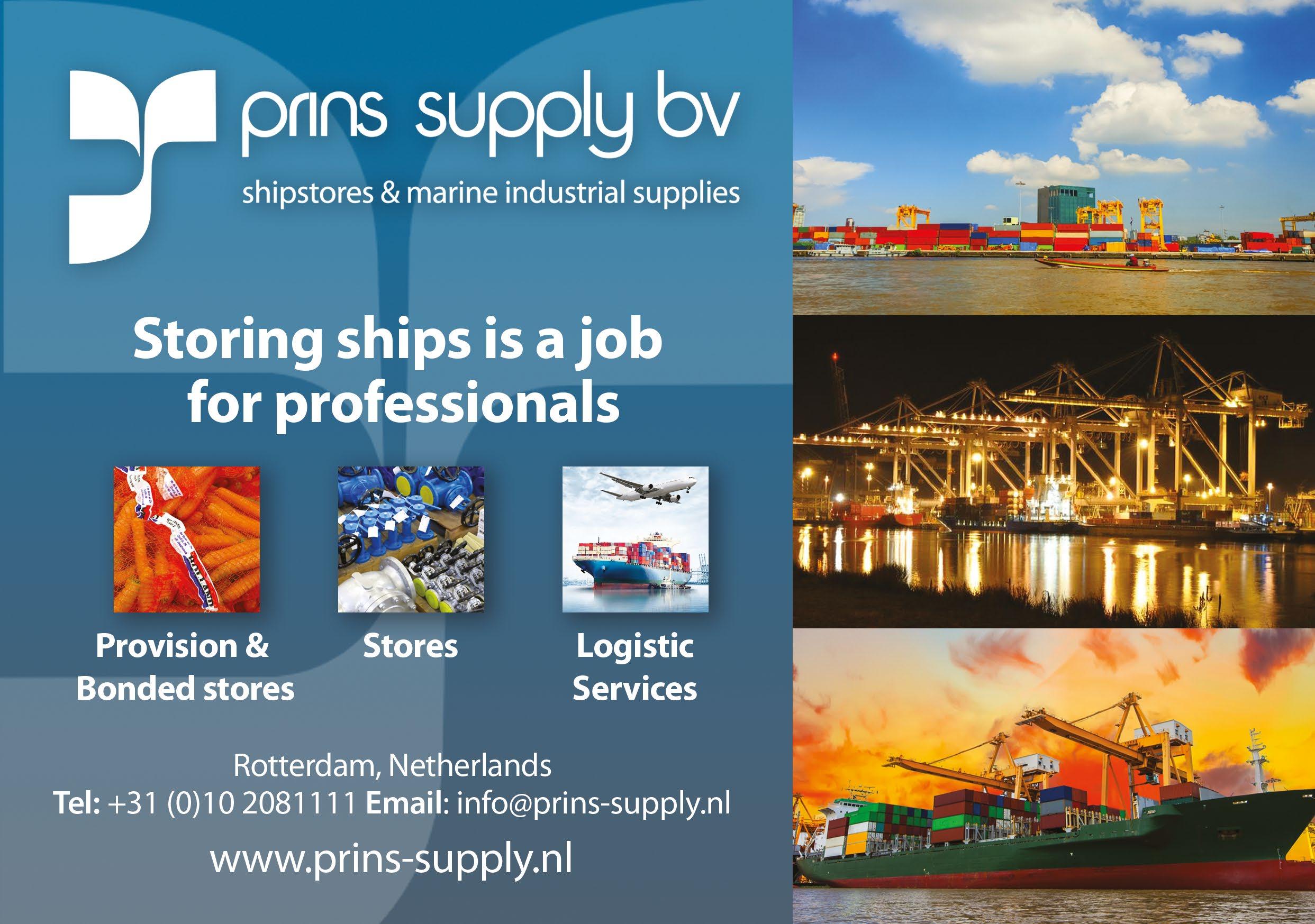
Corrosion Products & Equipment (CPE), a specialist engineering firm based in Rochester, New York State, USA, has been appointed as an authorised distributor and service provider across Thordon Bearings’ marine, clean energy and industrial seals and bearings portfolio.
The agreement follows increased market demand for Thordon products in northeast USA during the COVID-19 pandemic.
Jason Perry, Thordon Bearings’ Regional Manager, North America, said: “CPE has established
relationships with many of our existing and potential customers across the region and are well situated to represent Thordon in this growing area.”
CPE will serve the commercial maritime, workboat, pump and hydropower markets in New York State, Connecticut, Rhode Island, Massachusetts, New Hampshire, Vermont, and Maine.
Founded in 1988, the company represents some of the most trusted names in industrial engineering, having carved a niche as a distributor, fabricator, installer, and service provider of engineered
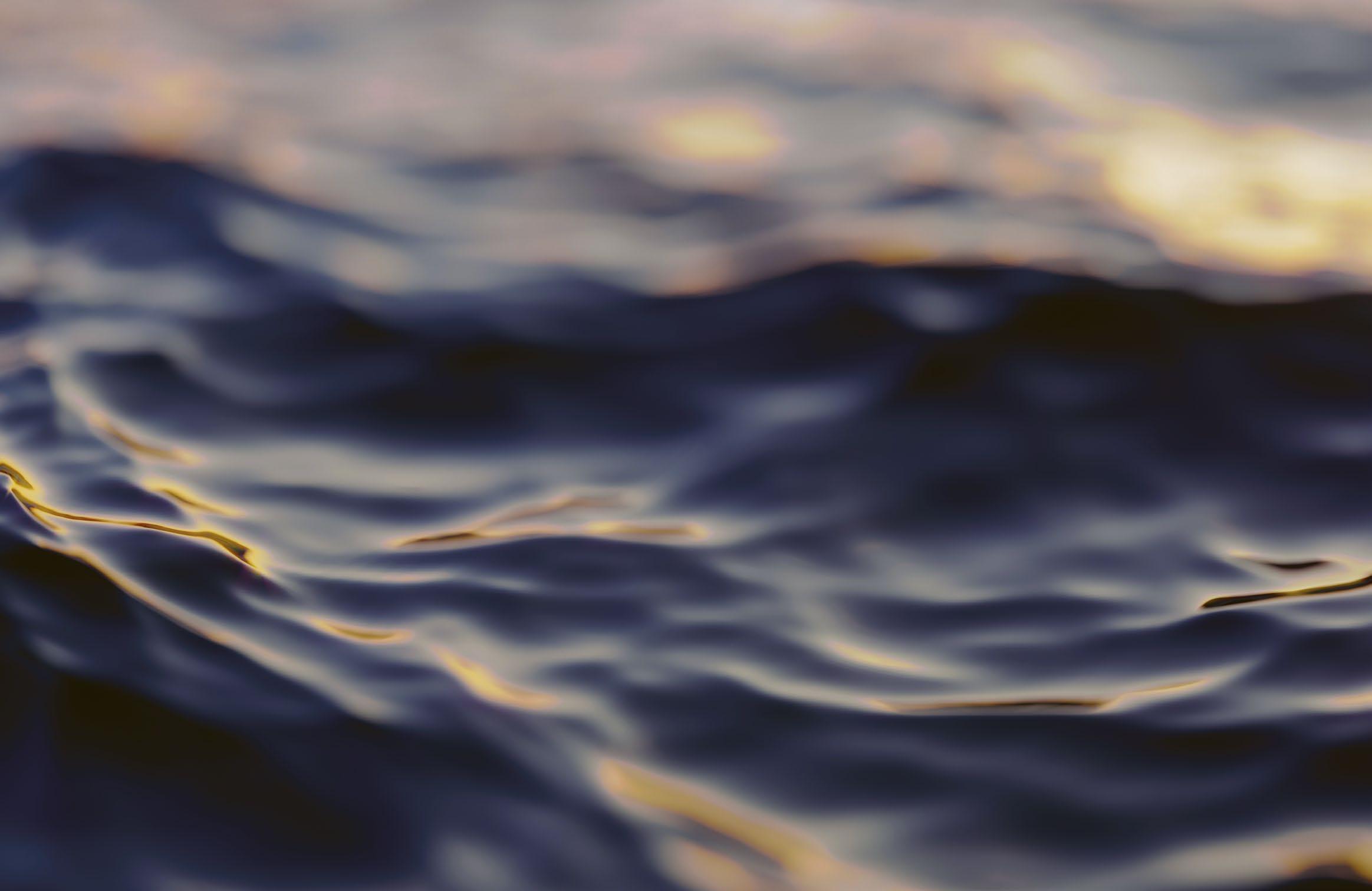


solutions across a broad range of industrial sectors. Robert Metz, General Manager, Corrosion Products & Equipment, said: “We are delighted that Thordon Bearings has the confidence in us to represent the company in this far-reaching area. It is a huge honor to be part of the Thordon global distributor network and represent products I know to be reliable, improve performance and reduce operational expenditure. Thordon’s reputation in all the markets it serves is second to none.” u
www.thordonbearings.com






Marinetrans (part of GTS Group), a logistics service provider specialising in supply chain solutions for ship owners and ship management companies, has acquired Door To Deck (D2D), a marine logistics specialist in Cyprus and Greece.
Marinetrans already had an office in Athens, and will gain a substantially larger presence in Greece with this acquisition. The co-founders of D2D, Kyriakos Tsitouridis and Michalis Theodosiou, will be driving further business development of D2D, Marinetrans and GTS in the entire Mediterranean area and will become shareholders of GTS Group.
John Burgstra, co-CEO of GTS, commented on the transaction: “With this partnership, Marinetrans will significantly expand its foothold in the Greek and Mediterranean market, which will enable us to provide our Greek clients with more scale and service close to their home.
“D2D has a strong position in the Greek market, which they have gained through superior customer service and profound knowledge of the Greek maritimeand shipping industry. Teaming up with them is an important strategic step for both companies.”
By joining forces, D2D gains access to an international 3PL and warehousing network and can leverage on GTS’ strong IT infrastructure, project
logistics expertise and innovative 5PL solutions.
Kyriakos Tsitouridis, co-founder of D2D: “With its international scale and position as global market leader, Marinetrans is at the forefront of providing intelligent and data-driven logistics solutions to ship owners and ship managers.
“By tapping into this knowledge and international network, we can provide our clients with more valueadded services and international boots-on-the-ground. Next to that, there is an excellent fit between our customer-centric company cultures and management teams – and we are sure that fit will make this combination a success.”
Michalis Theodosiou, co-founder of D2D: “Our clients will definitely reap the benefits of our companies joining forces.
“They will continue to be serviced by the experienced operating teams that they know and are accustomed to, while gaining access to new solutions and products on top of that.
“One of the services our customers have valued especially is our worldwide on-deck delivery service – and we think we can use each other’s knowledge, network and capabilities when it comes to this service.” u
Marine robotics technology specialist, Greensea Systems Inc. (Greensea), has announced significant hirings to its Program Management Team.
Jeff Guyette has joined to lead the OEM Program working alongside newly joined colleague Mark Cerbo on the Opensea Program.
David Pearson has stepped up from Senior Robotics Engineer to Program Manager, Autonomous Systems with Niels Huisman as Program Manager, Science and Academic Vehicles.
They bring extensive experience of open architecture software coupled with managing teams.
Also joining the PM Group is Andrew Papin, a Certified Scrum Product Owner (CSPO) who will play a key role working with Program Managers to increase their proficiency with agile best practices.
Rounding out the additions to staff, Greensea was able to bring Dennis Doan onboard through the Department of Defense Skillbridge program which connects military service members with participating businesses to provide a smooth transition from the military to the private sector.
Team Leader Laura Krahn, who joined Greensea last year, explaining her vision for the Team said: “Everyone comes with their own skill sets but we need to work together to bridge gaps and provide support to each other across all of our various initiatives to be successful.

“During my first few months on the job I have worked hard with each of the program managers to understand the complexities of the projects that they are working on and to help them develop implementation plans in collaboration with engineering staff to turn vision and drawings into software that debuts new and innovative features and functionality.”
Greensea’s Program Managers are responsible for the timely and accurate delivery of technology to customers and are fully committed to advancing the technology of ocean robotics across the full landscape of commercial marine, offshore energy, ocean scientific shipping and maritime industries. u
www.greensea.com
We bring you the dates of significant maritime events
BlueWeek2023 - Palma de Mallorca, Balearic Islands, Spain - 17 to 21 April 2023
Ship Energy Summit - Madrid, Spain - 27th April 2023
Day of the Seafarer – 25th June 2023
London International Shipping Week (LISW) – London UK - 11th – 15th September 2023
World Maritime Day – 28th September 2023; Theme: “MARPOL at 50 – Our Commitment g oes on”
WISTA AGM – Montevideo, Uruguay - 24th – 27th October 2023



Gorillaz’ Cracker Island is an energetic, upbeat, genre-expansive collection of 10 tracks featuring yet another stellar line-up of artist collaborators: Thundercat, Tame Impala, Bad Bunny, Stevie Nicks, Adeleye Omotayo, Bootie Brown, and Beck.
Recorded in London and LA earlier this year, Cracker Island was produced by Gorillaz, Remi Kabaka Jr., and eight-time Grammy Award-winning producer/multi-instrumentalist/songwriter extraordinaire Greg Kurstin. Originally based at Kong Studios in West London, the group of musical misfits have relocated to Silverlake, © www.newreleasesnow.com
A travel router is a small network router designed with an emphasis on portability and use in-the-field. Do not confuse it with the one you have at home.Travel routers are meant to link together a smaller number of devices all congregated fairly close together. You want a travel router that can easily connect to the hotel’s internet in different and reliable ways. In some hotels, you can plug the travel router directly into a courtesy Ethernet connection in your room. Simples! Trust us: you will wonder how you ever managed without.
© www.howtogeek.com (Jason Fitzpatrick)

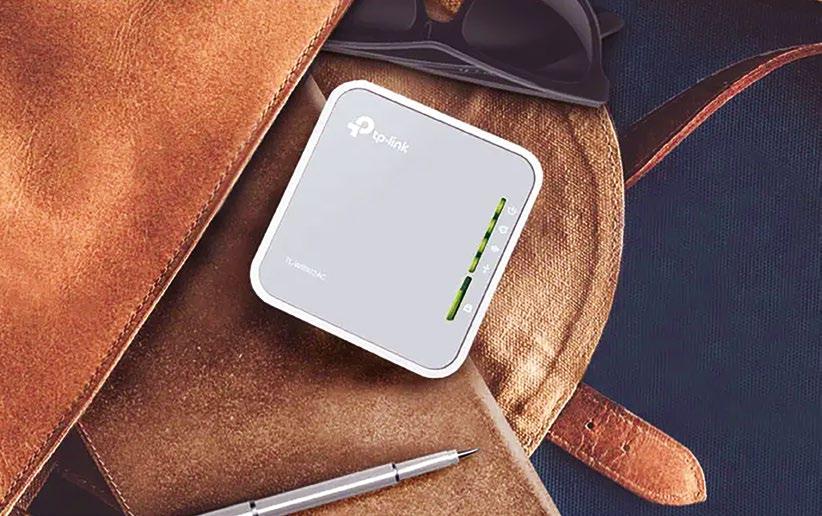
Apple has now been making its Watch series for many years, most of which have followed roughly the same formula. The Apple Watch Ultra takes all the good bits of previous designs, and piles as much as possible on top. Not exactly cheap, it has also resulted in the perfect device for athletes across the board. It is durable, waterresistant up to 100 metres, can deal with extreme low and high temperatures, has an impressive 36 hour battery life, and has detailed apps to track your fitness and health. On sale around £850.
© www.sciencefocus.com
For his debut on Sony Classical, violinist Luka Faulisi takes us into the ‘world of dreams’ that is Romantic opera. Among the operatic jewels included are Franz Waxman’s Carmen Fantasy (as made famous by Jascha Heifetz), Henryk Wieniawski’s Fantasy on Themes from Gounod’s Faust, Leopold Auer’s arrangement of ‘Lensky’s Aria’ from Tchaikovsky’s opera Eugene Onegin and Fausili’s own version of Violetta’s glittering aria ‘Sempre libera’ from Verdi’s La Traviata. Faulisi, described by the great Pinchas Zukerman as a violinist ‘with a million dollar sound’, grew up near the Opéra Bastille in Paris and would often queue for autographs at the Stage Door after seeing performances. Luka Fausili signed to Sony Classical in 2022 aged just 20. He studied at the Maastricht Conservatory with Boris Belkin and now at the Academy Lorenzo Perosi, Biella, Italy with Pavel Berman.
Aria – debut album by Luka Faulisi (Released 02/03/2023).
© Sony Classical www.sonyclassical.com


Loyal and attentive readers will recall that this column reviewed Dr Hameed’s first book in 2022 – The Full Diet. Dr Hameed has now produced a companion cook-book that promises “over 100 delicious recipes to lose weight, feel energised and live life to the full”. So does Dr Hameed deliver on her promise? The answer is a resounding “Yes!”. Her book is divided into neat sections: eggs, salads and soups; meat, fish and big veg; celebrations; sides; essentials and drinks. Dr Hameed’s recipes are set out in an easy-to-follow format; for example, helpfully calling out “hands on” and “hands off” preparation time. There’s an emphasis on fuss-free, simple meals that make the most of a few ingredients rather than calling for exotic additions or cooking techniques. There are lots of beautifully presented photos to inspire you - along with a helpful a refresher on the eating principles behind The Full Diet. If you are looking for simple, inventive, healthy cooking ideas, then Dr Hameed’s book is a great place to start.
The Full Diet Cookbook by Dr Saira Hameed Available via Amazon and all good bookshops.
For your correspondent nothing compares in art to the world of the Dutch Old Masters. If you feel the same then hurry to the Rijksmuseum in Amsterdam for a positive cornucopia of the genre in the shape of Johannes Vermeer. As the London Daily Telegraph commented this is art as immaculate conception. Twenty-eight of the surviving 37 pictures from The Master have been assembled for your delight in this fabulous Exhibition. Until June 4th; www.rijksmuseum.nl


Discovering a new restaurant stashed away at the bottom of a garden, complete with its own vegetable patch, feels rare in a city. But this is Laïa, a Mediterranean joint newly opened by Pierre Doublet and Quentin Garreau de Labarre. They took over an old distillery to grow a magnificent green bubble in the centre of Paris, flanked by Portuguese tiles and centred around a spacious bar area. The food is an elaborate barbecue situation: think spicy red tuna chorizo, paprika and lemongrass chicken espetadas and beef carpaccio. It’s easy to slip into cliché when describing it – ‘stunning’, ‘a pure masterpiece’ etc –but Laïa deserves a decent helping of superlatives.
© Time Out (Karim Merikhi)

